ABLENDOF TRADITIONAND MODERNITY
 bySreelekha Chatterjee
bySreelekha Chatterjee
“W
hat a lovely way to interpret mythology through fashion, madam!” Thomas, a potential French investor, seated next to me in the audience says, as my very first model Kasturi walks with her chin held high on the fashion runway flooded with powerful track light illumination and trendy, instrumental pop music
“Themed around the weapons of Indian goddesses that enhance our bold prints, as we mainly design dresses for today’s independent women, bearing a testament to their prowess and belief in inner consciousness! It’s the new visual language rooted in mythology, enthused from the spirit of fighting evil and triumphing against all odds ” I elaborate while looking at the train of girls spin onto the catwalk, flaunting strong-, brightcolored red, orange, and yellow cool, light, and comfy cotton, linen, rayon, chiffon outfits designed by me with clean cuts of geometrical patterns of concentric triangles, pyramids, diamonds, hibiscus petal shapes in the stylish silhouettes
Thomas is visiting India for the first time, looking for a possible collaboration with a fashion house to further his business of garments He has an air of crotchety perfectionism about him dressed in an immaculate grey suit, hair styled neatly with a setting gel, constantly adjusting his tie, while keeping a tab on his phone that has forced me to tread on eggshells in an attempt to impress him about my fashion brand.
“It’s the trishulor a trident with three sharp edges, symbolizing a harmonious balance within the human soul. The design has been digitally printed or machine printed on cotton, viscose, polyester, polyamide, and silk kurtis or blouses, worn with leggings or loose-fitting pajamas. Our customers have vouched for the color fastness.” I point toward the first model in the line
“Next, is the sword signifying comprehension and intellect that triumphs over negativity The same can be reproduced on midi dresses or frocks with ethnic motifs; lotus, leaf, or floral print; Patola print; Mughal print; lace; Boho, York embroidery and indigenous mirror work; flounce hem; and hand-braided waist belts The fabric can be sweat-wicking georgette, lightweight crepe, airy chambray, naturally stretchy jersey, or flexible lycra ”
“The third one is the spear that stands as a testament to the pledge to righteousness We have a plethora of choices from short to long
dresses absolutely perfect in terms of fittings, cuts, patterns, prints, colors, and fabrics for our modern women.”
Thomas takes no notice of the models and is, probably, unresponsive to my words, as his eyes seem to wander around the hall He squirms restlessly in his seat, wiping his sweat with a white tissue in between his clapping for the girls “The axe represents the power to both create and destroy
It’s all popular clothing, you see fashionable, enjoyable, and distinct that is the right choice for casual, formal, and party wear ” I pause, finding Thomas deeply engrossed in thoughts, perhaps woolgathering about the project he desires to undertake He raises his hands to clap but then abruptly drops them on his lap
“I shouldn’t have chosen this time of the year ” He clears his throat, mumbles speedily; his face flashes crimson, realizing my eyes are fixed on him
It’s the wretched summer month when one has to deal with the aggressive heat and unrelenting sweat Though the air conditioner is diligently following its duty, the huge turnout of people in the auditorium has made it somewhat suffocating The body odor over here is drowned in the fragrance of expensive perfumes While designing the clothes I have kept in mind the dry, hot season, and therefore, the bright colors to enliven the mood and rejuvenate the mind fatigued by the torture of the burning fireballs
“I have a flight to catch tonight ” He pronounces meditatively, hesitates for a moment, and resumes again, “For the past few days, I have been attending fashion shows followed up by meetings, but none of them have been quite fruitful. This is the last one I was hoping would turn out…”
My attention is wavering between the models walking the ramp and this probable client of ours. The next set of girls is showcasing multihued palettes that one gets to see in congregation at a traditional festival. When the world outside is being scorched by the merciless sun, blowing gallons of heat, we look for comfort in the bright, jubilant colors shades of blue, pink, violet, green soothing for the eyes, combining verdure with youth having fancy cutouts that complement the body, underscore curves, adding peripheral grace and elegance A festival is all about exhilaration, jollification, a cheerful occasion where one gets to relive the pleasures of life and momentarily disremember personal, day-to-day hardships and miseries Hence the positivity is represented in the vibrant colors and breathable fabrics of summer that resonate with the gusto created by the celebrations
At the end of the successful show, I along with my models assemble on the stage Excited voices from the audience cheer us, filling the atmosphere with their applause
“Will it be possible for you to drop me to the airport?” Thomas asks, with a grey hint in his blue eyes that precludes the
STORIZEN MAGAZINE | 17 APRIL 2024
option of future discussion about the newly displayed fashionable dresses
“All okay, ma’am?” Kasturi asks, stepping inside the make-up room when I am alone, collecting my stuff and preparing to leave
“I feel like a teacher who has realized the inattentiveness of a front-bencher student, but doesn’t know how to fix it ” I sigh deeply, moping about the missed opportunity
“Maybe we should keep a free mind and eyes wide open We never know through which door inspiration will walk in ” Kasturi says gently and prophetically
Outside the auditorium, it’s like a blast furnace We hop inside my car and drive off
“It’s simply an attainable, visual glory,” Thomas exclaims after a few minutes, trying to break the long silence between us.
“We have a lot more to present if you fancy a meeting with us in our office.”
He smiles thinly, averts his face, and looks outside the window.
The guards at the main gate signal to stop our car
“I have a VIP pass,” I assure the security personnel
“Everything is fine It’s just that our ma’am wants to personally check all the vehicles Will take only two minutes Sorry for the inconvenience ”
I scroll through the congratulatory messages on my mobile From the edge of my eye, I note Thomas staring at someone with rapt attention Before my eyes follow his gaze, a young woman walks up to our car As far as I’m aware, the head of security is a middle-aged lady Instead of a uniform, she is wearing a yellow cotton textile saree with an intricately designed, varicolored kantha stitch embroidered image of Matsya avatar Lord Vishnu depicted as a human torso with the lower body having the tail of a fish Thomas is unable to take his eyes off the saree
“Can I see your pass, ma’am?” Catching my eye on her, she crosses over to my side; her voice sounds familiar
I hand over my pass and almost instantly, recognize her It’s Kasturi wearing a saree from one of my previous collections She winks and releases us

18 | STORIZEN MAGAZINE OCTOBER 2023 APRIL 2024
“That’s kantha stitch, a centuries-old traditional embroidery, consisting of simple running stitch, that existed during the pre-Vedic age It’s mainly used to portray folklore, mythological tales, epics ” I elucidate to the mesmerized businessman
“Exquise! Is there any likelihoodthat such design could be adopted by your fashion house?” Thomas enquires
“Yes, of course!” I reply
“Bien! Tres bien!”His eyes twinkle, as he fishes out his phone from his handbag and starts keying in something. For a moment, he lifts his head and smiles, “I will have to cancel my flight. Is your office open tonight?”
I nod my head in affirmation, harboring his infectious smile and feeling a lot lighter as if a heavy load has suddenly been lifted from my head.
“Merci beaucoup ” His jovial eyes concentrate on his phone screen
As I drive toward my office, I recall the tale of Lord Vishnu who took the avatar of a fish to save mankind from the deluge that was bound to consume the world Perhaps it is necessary to preserve our ancient, traditional art in the midst of the inundation of new fabrics and advanced technology to generate more meaningful, environmentally positive, and visually stunning apparel fitting our needs
Sreelekha Chatterjee’s short stories have been published in various national, and international magazines and journals like Indian Periodical, Femina, Indian Short Fiction, eFiction India, The Criterion, The Literary Voyage, World of Words, Writer’s Ezine, and Estuary, and have been included in numerous print and online anthologies such as Chicken Soup for the Indian Soul series (Westland Ltd, India), Wisdom of Our Mothers (Familia Books, USA), and several others She lives in New Delhi, India
You can connect with her on Facebook at facebook com/sreelekha chatterjee 1/,
Twitter -@sreelekha001, and Instagram @sreelekha2023


STORIZEN MAGAZINE | 19 APRIL 2024
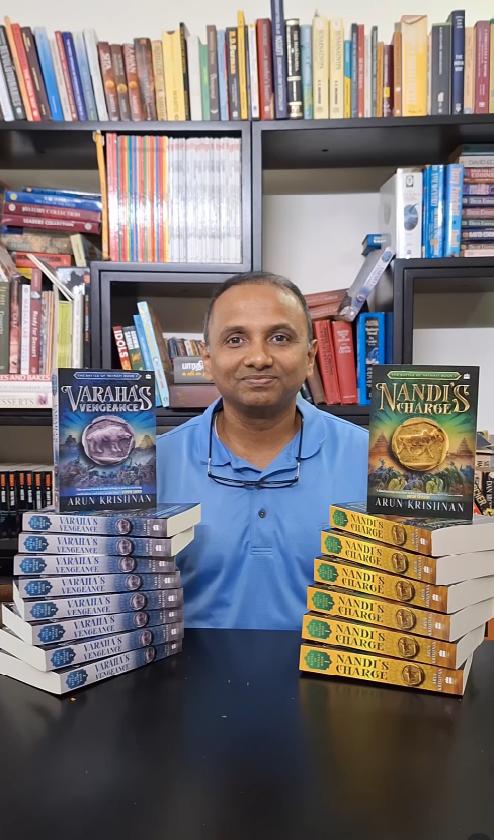
AUTHOR INTERVIEW with Arun Krishnan @storizenmag www.storizen.com Pic Source: Instagram
Your novels, "Nandi's Charge: Battle of Vathapi Book 1" and "Varaha's Vengeance: The Battle of Vathapi Book 2," delve into the historical Battle of Vathapi in 7th-century India. What initially drew you to this pivotal moment in Indian history as the backdrop for your storytelling?
I hail from the Thanjavur region, which is rich in history and culture The ancient temples have always fascinated me and I used to often wonder about the times when the temples were built “I wonder if Raja Raja Chola stood at this very same spot a 1000 years ago”, I remember thinking, standing in the preccincts of the Big Temple in Thanjavur
One of my favourite writers, the great Kalki, had written a book about the same event, titled ‘SivagamiyinSabatham’
Moreover, this time period in Indian history is fascinating There were three great kings –Harshavardhana, Pulikeshi and Narasimhavarman Pallava Great universities like Nalanda and Takshashila were thriving Students from all over the world visited our country. The Bhakti movement was just taking off in the south.
All this and a road trip around Karnataka with my wife in 2009, as well as a trip to Sri Lanka in 2013, gave me the impetus to write this book. There was also the fact that the history of the south is not dealt with exhaustively in our history books. There are many tales to be told and hence, the decision to write about this time period.
Both books explore themes of loyalty, honor, and sacrifice amidst the backdrop of political intrigue and military conflict. How did you go about researching and depicting the ethical complexities of warfare and humanitarian conduct in ancient India?
Indian stories are replete with stories of integrity and moral rectitude in the conduct of warfare Dharma as a way of guiding one’s actions was very prevalent then My work was in reimagining how those concepts could fit into the everyday life of individuals in those days I have however also shown that there was depravity as well I strongly believe that human
emotions and behaviors are timeless Hence, there were good and bad people in those days, just as they are in our current day and age However, mores have changed over time My job as a historical fiction author was to ensure that the conduct of the people was in alignment with the mores of their times
Your attention to detail and vivid world-building are consistently praised in reviews of your novels. Could you share some insights into your research process and how you bring ancient India to life for your readers?
I read a lot about the time period that I am writing about For The Battle of Vathapi trilogy, I read K A NeelakantaSastri’s book on the History of South India I also read R C Majumdar’s magnum opus on the History and Culture of the Indic People I referred to the Mahavamsa – the history of Buddhism in Sri Lanka – as well These enabled me to understand the time period very well Moreover, I also researched online into the culture, the traditions, the clothing, food that was prevalent in those days
When I write, the scene plays out in front of my eyes like a movie. I simply transcribe what I “see”. One has to keep in a mind a few things. For example, the correct usage of words. I can’t write something like “as regular as clockwork” since clocks weren’t invented then. Also, the population was much less in those days, which implies that crowds, away from cities, would be less. There was a lot more forest cover.
I also make use of Google Maps a lot to look at the topology of places and to figure out distances and the time taken for trave For eg: A lone rider on horseback can do maybe 30 Kms per day On bullock-cart – maybe 20Kms per day A man could possibly walk about 12 Kms per day An army moves slower than a lone man so all these estimates also go down I take all this into account while writing the scene
I must note here that I am a big fan of David Eddings, the fantasy writer, and have learnt a lot on world building from reading his books

STORIZEN MAGAZINE | 21 APRIL 2024
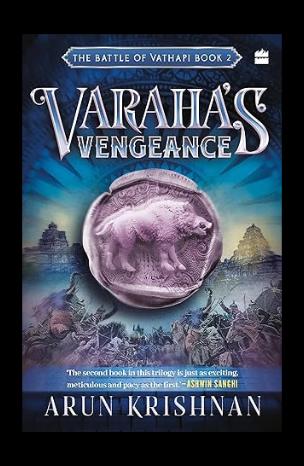
In a tumultuous seventh-century India, the Pallavas face a relentless onslaught from the Chalukyas, led by King Pulikeshi and aided by his brother, Kubja Vishnuvardhana. As both sides wage fierce battles on land and sea, the fate of the Pallavas hangs in the balance, testing their resolve and defenses against overwhelming odds.

"Nandi's Charge" and "Varaha's Vengeance" feature a diverse cast of characters, each with their own personal journeys and motivations. How do you approach character development, particularly in the context of historical fiction where characters may be based on real figures?
I try and base my characters on real people
Historical characters were real people with the same sets of feelings, emotions and behaviours and I try and show that I do observe people a lot whether it is in offices, railway stations, airports or in social settings I pick up characteristics and traits from what I observe Of course there are also characters that I have read in other books who have made an impression My characters usually are a potpouri of all these
The pacing of your novels has been noted as a strength, with readers finding themselves engrossed in the narrative despite its complexity Can you discuss your approach to pacing and how you maintain momentum throughout the story?
The writers who have left an impact on my writing are, in no particular order, PG Wodehouse, Jeffrey Archer, Alistair Maclean, David Eddings, Louis L’Amour and Kalki. I have imbibed the art of keeping the story moving forward and interesting from Jeffrey Archer, Maclean and Kalki to a large extent. Kalki, when he wrote his Ponniyin Selvan and other historical novels, wrote them as a series in a weekly magazine, with the result that he had to leave a hook at the end of every chapter, so that the audience would wait with bated breath for the next chapter to drop, the following week I have tried to do the same in my book, by ensuring that the ending of each chapter leaves the audience feeling un-satiated
Your novels explore the intersection of personal relationships and political conflict, particularly through the experiences of characters like the three spies Elango, Muthuvel, and Kannan How do you balance the intimate, human elements of your story with the grandeur of historical events?
Historical events appear grand to us, in retrospect They were probably every similar to other events that are happening today, and which, to a future generation might appear grand I try and take the grandeur out of the event and showcase it as what life ultimately is – the interplay of human relationships I try to make sure that the personal relationships that I talk about have some bearing on moving the story forward I also use these relationships to explore how humans would have
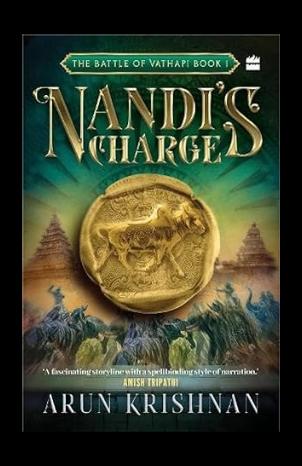

STORIZEN MAGAZINE | 23 APRIL 2024
acted a millennia ago (Hint – not much different from how we act now ) Also, unlike most historical fiction books, in which the main character is the king or prince or whatever, I try to tell my stories through the eyes of the common man The captain in the army or some such Think about it The king would rarely have the time to go about the land doing stuff The actual action would be done by the underlings and the minions So that’s the story I like to tell
Do you prioritize crafting the plot or developing the characters in your creative process? Can you explain your approach and the reasoning behind it?
I am not one of those who plots every last detail of a book I simply don’t write that way My process is more organic in that I start off with a very broad outline for the book that I jot down I might write out the chapter titles for say the first five to ten chapters with a one line description of what I think will happen in each chapter I then start to write
At this point in time, I have no idea of the characters except maybe one or two of the main ones. The other characters start to pop in as I write. I never have a pre-defined list of characters. As I imagine a scene, ideas for characrters come about. Let me illustrate with an example. Let us suppose that there is a young prince who is going into a forest on a hunt. As I write the scene, obviously, the young prince won’t be alone. So who would he go with? There will be attendants of course, but surely, there would be some friends as well as part of the entourage? So how many friends? What kind? Childhood friends, maybe Then I try and make the friends different One of them could be a wise-cracking person Another one silent A third, perhaps with intellectual pretensions
Another example from the trilogy is Sadaiyan Sadaiyan arose very organically The scene is one in which Muthuvel is to board a ship As I imagined the scene, I thought of a queue of people waiting to board What else? There had to be something else in the scene Some stray dogs perhaps? But then what? So I had a little boy who was feeding the stray dogs And that’s how Sadaiyan’s character took shape When I first wrote his character, I had no idea how important a role he would play in the books
Then, once I have this idea in my mind, the character development of those other characters follows Could I introduce humor between the friends? Maybe a bit of tension between them as well
In what ways has your initial idea ever dramatically changed by the time the book is completed?
In this trilogy, the one that changed dramatically for me were the character arcs of Muthuvel and Indumathi I didn’t start off by liking the Muthuvel character as opposed to say, Kannan or Elango The initial thought was to make him a snooty counterpoint to the other two However, as I wrote, and especially after his meeting with Sadaiyan, he started to grow on me
How has the experience of writing and publishing a book impacted your self-perception?
You know, as a professional and someone who doesn’t make a living from writing, my thoughts were always about professional advancement However, since I started writing, I have realized that if ever I have to leave a mark on this world, it would be through my writing People forget professionals and what they have achieved in a short span Words stay a long time after the author is gone!
If you had to describe yourself in just three words, what would those be?
Scientist. Rationalist. Dharmic.
(Interviewed by Swapna Peri)
APRIL 2024 24 | STORIZEN MAGAZINE
We are Sure
You got a brilliant idea for a story
Let us know when you write it and publish it.
We'll help you spread the good word. talktous@storizen.com

AshisGhatak,Author: TheMusicalMaverick: TheAuthorized BiographyofShankar Mahadevan Author
INTERVIEW
Could you share a bit about yourself and how you started writing?
I am an English teacher by profession in a senior secondary school of Calcutta I have always had a penchant for writing on anything that excites me I got to see my name printed for the first time on quite a few academic books I wrote Travelling places and meeting people helped me branch out to another domain of writing I have always enjoyed, travel writing Writing books, I should honestly say, was serendipitous Deep down in my heart, I always wished to see my own book on the stacks in the city bookstores I loved to pass the time It was so humbling as that happened when my first book hit the stores three years back
Your passion for music and photography suggests a deep love for art Can you tell us how these interests began and if there were any particular incidents that inspired you?
My love for photography came mainly from my latent wish to be a poet. You know perhaps every Bengali loves to be a poet at a certain point of their life. When I sadly discovered that my talent doesn’t go beyond writing silly limericks I tried to play with my camera. Then I felt well, with my camera at least I can write some haikus here, if not a long poem. And like those closet poets who take pleasure reading their own poems thinking that their compositions are second to none, I am happy being a closet photographer regaling in a self-absorbed world. I can’t remember of any particular incident as such but I do love to remember the encouraging words from my friends who instilled in me the confidence and belief of writing books They still do
How did you go about exploring Shankar Mahadevan's personal and psychological aspects to understand his fears, ambitions, and vulnerabilities that influenced his journey?
I used my experience of writing my first book, the authorised biography of the Jazz legend Louiz Banks While studying on Shankar Mahadevan It was Louiz Sir who got me in touch with Shankar ji They two share great bond and Shankar ji was one among
many who looks up to Louiz Sir as his mentor and Guru Meeting the childhood friends of Shankar ji whom he values a lot and to whom he attributes his success, I could discover the fears, ambitions and as you say, the vulnerabilities that influenced the journey of a young singer of becoming Doctor Shankar Mahadevan and Grammy winner Shankar Mahadevan Talking to him in several sessions of interviews helped me too to know how sticking to his passion helped him overcome those fears and vulnerabilities
The biography portrays Shankar Mahadevan as someone who embodies the down-to-earth humanity of Mumbai despite his fame. Can you share any stories or moments from your research that illustrate this quality?
One should keep in mind that Shankar Mahadevan wasn’t born with a silver spoon and fame didn’t happen overnight He came of in a middle class closely knit family and merrily stayed in a 500 square ft flat with his brother and parents The middle class values instilled in him by his parents never left him and now when he owns a mansion with a fleet of cars donning the courtyard of his home, he remains the same Shankar who starts his day with his mother’s blessings and the same ‘Jadya’ to his bunch of friends with whom he had passed the halcyon days of his carefree life. Stories of his early life would melt one’s heart. He could laugh away the sniffles and sorrows when he would pass time with his friends, sing his ever favourite Kishore Kumar songs and get the silent support from his father when chips were down. The love story of Shankar ji and Sangeeta Mam is heart-warming. I remember one incident that he shared with me It was the time when he would get occasional calls to sing jingles They came few and far between and the newly married couple were content with whatever little he earned For them every small joyous occasion was momentous The day Shankar ji got the cheque with five figures for the first time, they celebrated by treating themselves at a Chinese restaurant Returning home by the double-decker BEST bus that we saw in Basu Chatterjee films, they held on to each other firmly as they were approaching the days of prosperity Only a Shankar Mahadevan could celebrate his 25th wedding anniversary with his childhood friends and openly declare among all that his friends and his family make his life complete My book abounds with such stories

STORIZEN MAGAZINE | 31 APRIL 2024
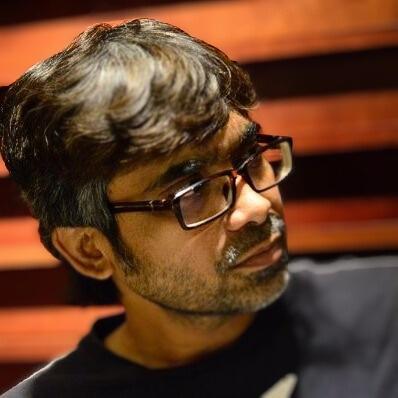 Pic: Ashis Ghatak
(Source: LinkedIn)
Pic: Ashis Ghatak
(Source: LinkedIn)
Balancing between recounting Shankar Mahadevan's achievements and providing broader social, political, and historical context in the biography must have been challenging. What were some obstacles you encountered while presenting this multifaceted narrative?
See, a biography won’t tell you the greatness of your subject unless you situate him in a broader social, political or historical context Anyone becomes famous not just by something he does but how he cuts above the rest at a given time When you place one in a bigger and more complicated matrix of contemporary time, you can flesh out the character more convincingly So when I tried to explore his achievement on jingles, I had to give a sketch of the anglicised domain of contemporary ad films and how he brought in the Indianness When one reads on Breathless one has to look at the broader perspective of the then Indi-pop music and how Breathless stood out among the rest Same goes with the huge depth and variety of SEL compositions spanning more than 25 years Now when I write on as big as Shankar Mahadevan who dabbles and excels in every discipline he touched, my main challenge was to be careful about the size of the book. Every time I wished to write in details, I curbed myself. Even after a constant mental note of how much fat the book might be getting, I had to trim almost 30 percent of the total word count during my editing.
In what ways does Shankar Mahadevan's journey demonstrate human resilience and creativity, as depicted in your book? Can you highlight key moments or decisions in his life that showcase these qualities?
When you speak about human resilience and creativity, his life is an example When he had already established himself as a successful professional, a great future opened up He got the key to fly to US, get a squeaky clean office at the giddying heights of a Texan high rise But he chose to stay in the most humble mohalla of Chembur, chucked the opportunity in a whisker and braced the uncertainties of a rookie singer These were all out of his extreme passion to sing The interiors of the recording studio, the resonance of the sound, the jingles or may be a pithy sargam or an alaap appealed him so much that he felt happiness lay in here Offers didn’t come in a flurry But he waited and grinded When he started singing film songs, only the kitschy leftovers of an album were left for him to croon or he would be called only for singing high pitched alaaps to decorate others’ songs
I don’t need to cite examples when and how the tide turned
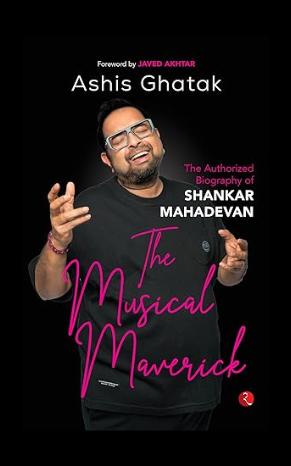

STORIZEN MAGAZINE | 33 APRIL 2024
Everyone talks about Breathless, Dil Chahta Hai or Kal Ho Na Ho etc. They have created sensations in a way. Since you are the biographer, I would like to ask you, not going by popularity is there any lesser popular work of SEL that appeals to you in a big way?
Definitely yes and there are examples galore where some of the brilliant SEL songs went out of people’s memory just because the films didn’t do well About such albums, songs of two films instantly come in my mind, Armaan and Kuch Na Kaho The songs are super melodious I would love to write on so many forgotten songs Listen to the wonderful Jeene Ke Ishare from Phir Milenge or Jugnu from Panga or the playful songs like Jaane Bhi De from Heyy Baby or Dekho Raste Mein from Hum Tum Aur Ghost People listened songs of Bandish Bandits but listen to the lively Shuru Se Shuru from Modern Love as well Then the superb compositions of Johnny Gaddar and D-Day got brutally chopped off from the film Ek Ghadi of D-Day is sensational People could hardly know of these gems I wonder how many could remember Dhundli Dhundli that Shankar ji sang for Sanjay Leela Bhansali composition in Guzarish or his very own Dheere Dheere in Kyun Ho Gaye Na!
What challenges you faced fusing Shankar Mahadevan as an individual identity and Shankar Ehsaan Loy as unified identity in the same book?
I don’t think it was a challenge in establishing two identities- Shankar Mahadevan being himself and Shankar Mahadevan as a part of the trio SEL Because the identities were not separate at all He just put on different apparels in whichever role he played as he was an apostle of music He is so versatile that when he sings Carnatic classical in a kutcheri or singing devotional songs of Vitthala among a handful of people in a religious gathering, one can’t believe that he is the same Shankar Mahadevan who composed and sang Uff Teri Ada The only challenge, if I use the word, was to strike a balance between Shankar Mahadevan with and without Ehsaan and Loy I was careful in that Because SEL is just a part of the huge repertoire of the music of Shankar Mahadevan
Can you tell us about your experience writing Louiz Banks' biography?
Louiz Banks biography happened because of me being a part of country’s only R D Burman foundation, Euphony Euphony does RD tribute shows with the original musicians who were part of his team and once Louiz Banks, one of the key RD Burman musicians, was invited as a performer It was incredible when Louiz Sir accepted to my proposal of writing on him since I had no experience of writing book on any person prior to that It turned out to be a highly rewarding experience of my life I could see from a very close quarter how greatness comes not only from the art one practices but also from being the person that one is I got to know how passionate and steadfast he has been to bring India at the doorstep of the world Jazz is not at all related to our traditional music, so to speak But Louiz Banks has always been the pioneer to disseminate Indian music when he played Jazz all over the world, fused this western musical tradition with Indian music and spread a unique brand of Indo-Jazz music to the world and evolves the diction of jazz to popularise it among the modern generation of music lovers
How did writing biographies of musicians in particular impact your personality?
Knowing these great musicians and writing their life story in books only reaffirms the dictum that when passion rules in you, you will settle for nothing less than where you want to reach. Louiz Banks could easily reject the lure and glamour of Bollywood music because what was important to him at that time was the pleasure he used to get from playing in Blue Fox in Calcutta His passion was jazz and he would do whatever it took to pursue it Someone said that if you really do something that you love doing, money will automatically follow suit, but if something is driven only from the pursuit of money, you will lose your way Same thing is applicable about Shankar Mahadevan Success came to them because they could put every other attraction to rest, but they were unflinching in following their passion for Music, and they have become the source of joy to the millions No reward can be comparable to this as not many are chosen by God to spread happiness and entertainment to the world I’ll be happy if I could translate this impact on me to my readers across the generations
(Interviewed by Swapna Peri)

APRIL 2024 34 | STORIZEN MAGAZINE

As you turn the page, let the adventure begin –our book reviews await, promising literary delights and captivating tales!
Pic: Swapna Peri

Siddhartha Gigoo's "A Long Season of Ashes" is a hauntingly beautiful and poignant memoir that explores the experiences of Kashmiri Pandits who were forced to flee their homes in the 1990s due to the violence and persecution that erupted in the region
The book is a deeply personal account of
the author's own experiences, as well as those of his family and community, during this turbulent time. The book begins with the author's childhood memories of growing up in Kashmir, a place that he describes as a "paradise on earth". However, these idyllic memories are soon shattered by the outbreak of violence and the forced exodus of Kashmiri Pandits from their homes. The author describes the sense of loss and dislocation that he and his family experienced as they were forced to leave behind their homes, their belongings, and their way of life The book is structured as a series of vignettes, each one exploring a different aspect of the author's experiences and memories These vignettes are often deeply personal and moving, as the author reflects on the impact of the violence and displacement on his own life and the lives of those around him One of the most powerful aspects of the book is the way that it explores the emotional and psychological impact of violence and displacement on the author and his community The author describes the sense of loss, grief, and trauma that he and his family experienced, as well as the feelings of anger, fear, and helplessness that were so common among Kashmiri Pandits during this time Siddhartha Gigoo's "A Long Season of Ashes" features exquisite and emotive prose, employing vivid descriptions and poetic language to animate the characters' experiences and emotions. Gigoo's writing style is characterized by rawness, evocative storytelling, and heartfelt prose, portraying the plight of Kashmiri Pandits with poignant detail and emotional depth. Through exploring memory and resilience, Gigoo illuminates how the past shapes the present and future, while also revealing the profound human toll of conflict and displacement "A Long Season of Ashes" is a poignant and powerful memoir that delves into the experiences of Kashmiri Pandits during a period marked by violence and displacement
Through deeply personal accounts, the author, Siddhartha Gigoo, conveys not only his journey but also that of his family and community, highlighting resilience and the enduring human spirit.
Devdutt Pattanaik's "ABC of Hinduism for Kids" is a wonderful overview of Hinduism aimed at children This alphabet book cleverly uses each letter to teach basic concepts and deities of Hindu belief, from "A" for "Atma" (soul) to "B" for "Brahma" (the creator deity), making complicated ideas approachable and fascinating to youngsters
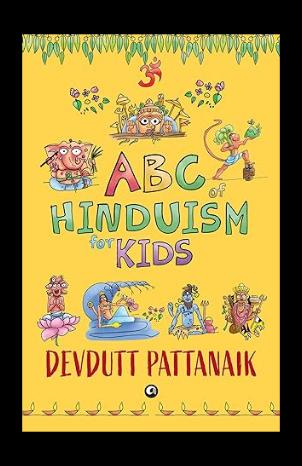
Pattanaik expertly navigates more complex issues like the caste system in an age-appropriate way, stimulating interest and further investigation The book's plain language approach, paired with bright images, ensures that Hinduism is presented in an accessible and compelling manner, grabbing the attention of young minds This book is an excellent resource for Hindu families who want to teach their children about their faith in a fun and instructive way It can also help educators and parents who want to enhance their children's awareness of many global faiths Each page of "ABC of Hinduism for Kids" provides a glimpse into the rich culture of Hindu myth and tradition, giving it the ideal introduction to the Hindu way of life for young readers
Renowned mythologist Devdutt Pattanaik's reinterpretation of Hindu themes and deities through the prism of an alphabet book guarantees that youngsters learn important aspects of Hinduism in a pleasant and approachable way From the mighty goddess
Devi to the complex concept of atma, each item in this book relates to a letter of the alphabet, leading youngsters on a colorful trip through Hindu mythology and philosophy.
With engaging pictures and straightforward language, "ABC of Hinduism for Kids" is a riveting introduction that encourages interest and comprehension in young readers.
36 | STORIZEN MAGAZINE APRIL 2024 STORIZEN REVIEW

Mysteries and thrillers challenge readers to grapple with difficult questions while engaging in the intellectual pursuit of solving a puzzle When these novels confront societal issues such as racism, homophobia, and transphobia, the reading experience becomes both exhilarating and introspective, delving into the darker aspects of humanity while keeping readers on the edge of their seats In this aspect, S A Cosby's "All the Sinners Bleed" is a dark and captivating crime book that expertly navigates the complications of race, religion, and murder in the American South Set in Charon County, Virginia, the tale follows Titus Crown, the county's first Black sheriff, as he deals with the fallout from a school massacre that reveals a frightening network of secrets and horrors Titus' return to Charon County to care for his father propels him into the position of sheriff, aiming to battle the county's ingrained bigotry and corruption under his predecessor When a former pupil performs a stunning act of violence at a local school, Titus discovers a diabolical trail of deaths that shakes the community to its core As he digs more into the case, religious fanaticism and deepseated intolerance emerge as powerful foes Author Cosby's story effectively examines topics like tragedy, perseverance, and the prevalence of hatred in small-town America. Through Titus' eyes, we see the challenges of a man torn between his obligation to enforce justice and the weight of ancient injustices that still haunt Charon County. The author's depiction of racial tensions and the influence of religious fanaticism adds layers of depth to the plot, making it both a thrilling thriller and a moving commentary on societal concerns Titus Crown develops as a captivating and dynamic figure, juggling personal relationships and professional problems amid escalating racial tensions Cosby expertly blends together themes of masculinity, tradition, and familial dynamics against the backdrop of a tireless quest for justice While the work occasionally suffers from clumsy speech and pacing concerns, the overall story remains compelling and thought-provoking "All the Sinners Bleed" marks a notable shift in Cosby's narrative, offering a subtle and comprehensive examination of the Appalachian experience and the ongoing legacy of prejudice The author's uncompromising account of rural Virginia captures the region's paradoxes and complexity, providing readers with a visceral and realistic image of its micro-societies and extremes Despite its shortcomings, this work cements Cosby's status as a key figure in modern crime fiction. In conclusion, "All the Sinners Bleed" is a must-read for enthusiasts of gritty crime fiction and those interested in stories that address current societal concerns. S.A. Cosby's latest work demonstrates his ability to combine suspenseful storytelling with astute social criticism, resulting in a thrilling and evocative reading experience that remains long beyond the last page.

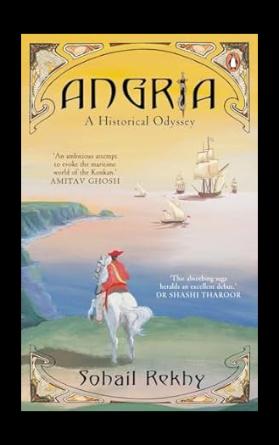
"Angria: A Historical Odyssey" by Sohail Rekhy is a captivating exploration of Kanhoji Angre, the "Emperor of the Seas" of India in the late 17th and early 18th centuries. The novel provides a vivid portrait of a man whose naval might terrified European nations, including the British, Portuguese, and Dutch Rekhy's attention to detail and skillful weaving of difficult historical facts make it an engaging read for history buffs seeking lesser-known parts of Indian history those unfamiliar with India's maritime history, Rekhy's tale provides an engrossing introduction to a pivotal man and period in Indian naval combat The book's engaging storytelling and rich visuals give readers a renewed respect for Kanhoji Angre's life and accomplishments Rekhy's thorough knowledge of his topic comes through, giving readers a look into Angre's strategic ingenuity and heroism as he defended the Indian seas against tough foreign foes "Angria: A Historical Odyssey" demonstrates Rekhy's commitment to historical study and narrative. The book is not only educational, but also entertaining, transporting readers to the realm of 17th-century maritime battle and political intrigue. Rekhy's ability to bring history to life via compelling writing and painstaking detail makes this a must-read for anybody interested in Indian history, seafaring adventures, or stories of brave leaders who changed the course of history. In 2022, I got the opportunity to explore Kanhoji Angre's life through another book, Manohar Malgonkar's "The Sea Hawk: Life and Battles of Kanhoji Angrey" This book tells the intriguing narrative of Kanhoji Angrey, a renowned master mariner, fighter, and strategist who led the Maratha empire's fleet against European threats along the Konkan coast in 17thcentury India Reading Angria and Kanhoji from a different author appears to be a wonderful experience since I can reread the majesty of ancient Indian maritime legacy "Angria: A Historical Odyssey" is a gripping and well-crafted first novel that illuminates an intriguing period in India's nautical history Sohail Rekhy's evocative depiction of Kanhoji Angre's life and exploits takes readers on an immersive trip across the treacherous seas of the Indian Ocean, highlighting the perseverance and strategic brilliance of a legendary person
Whether you are a history buff or simply like a compelling adventure novel, "Angria" will capture and inspire you.
STORIZENREVIEW STORIZEN MAGAZINE | 37 APRIL 2024
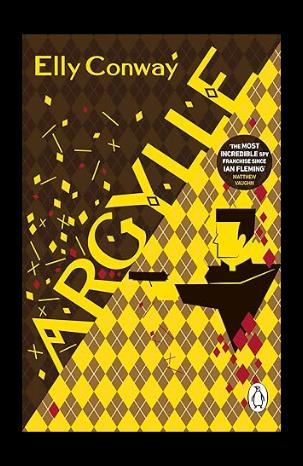

Elly Conway's debut novel, "Argylle," has received a lot of attention, and it marks the beginning of a breakthrough espionage franchise The story features Aubrey Argylle, a charming and capable heroine who is drawn into a high-stakes CIA assignment
after a daring rescue in Thailand captures the agency's attention Raised by itinerant drug dealers, Argylle's multilingualism and martial arts proficiency make him an ideal choice to foil a Russian supervillain's pursuit of a stolen Nazi treasure that offers unrivaled power. The plot of "Argylle" unfolds in the fascinating world of espionage, with CIA agent Frances Coffey leading the assault against an oncoming catastrophe organized by a powerful Russian oligarch. Despite his turbulent history, Argylle's potential as a valuable asset to Coffey's goal is revealed via a serendipitous encounter distinguished by compassion and intellect As the narrative progresses through exotic settings such as Monte Carlo and lonely Greek monasteries, the stakes rise, and Argylle's will and ingenuity are challenged "Argylle" is a gripping ensemble espionage thriller in which the CIA establishes a team to confront a powerful Russian opponent Aubrey Argylle, a vital member of this unit, experiences a transformation from an orphaned survivor in Thailand to a sophisticated and strategic spy The novel's strength is its portrayal of collaboration and friendship, with each character playing an important role in the quest to bring down Vasily Federov Unlike the traditional James Bond stereotype, Argylle develops into a thinking man's action hero, providing complexity to the story Conway's storytelling in "Argylle" creates an engrossing web of intrigue and adventure against a backdrop of international turmoil. Through high-stakes confrontations and periods of contemplation, the individuals confront their inner struggles in a dangerous terrain where trust is a scarce commodity. Themes like redemption, sacrifice, and the war between good and evil run throughout the story, providing readers with a deep analysis of the human condition in the face of hardship. The book has received mixed reviews. While some readers praised Argylle's cleverness, innovative aspects, and character development, others criticized its one-dimensional characters and lack of depth in the tale
Overall, "Argylle" is a compelling and interesting book in the espionage genre.

Emperor Ashoka was one of the most unusual kings in global history, and Patrick Olivelle's insightful biography
"Ashoka: Portrait of a Philosopher King" retraces his life and impact Ashoka, the most well-known monarch in South Asian history, had an influence that went
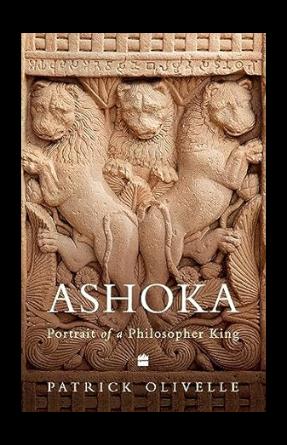
much beyond his sizable realm. Patrick Olivelle creates a thorough portrait of Ashoka by referencing the art, architecture, and inscriptions left by the king. Before British colonial control, no king reigned over a greater portion of the Indian subcontinent than Ashoka, who ruled in the third century BCE His goals went beyond merely governing a large territory; instead of using a cult of personality to unite his wildly diverse kingdom, he sought to spread the concept of "dharma " This moral philosophy served as the linchpin of a new order, influencing both his subjects and international relations Patrick Olivelle's "Ashoka: Portrait of a Philosopher King" expertly reconstructs Ashoka's multidimensional life, portraying him not just as a monarch but also as a Buddhist, moral philosopher, and ecumenist Ashoka's great influence spanned India and beyond, prompting various views of his significance across Asia
Olivelle's tale is around Ashoka's pursuit of dharma as a uniting force throughout his large empire, a moral philosophy that transcended geographical boundaries and resonated with rulers and subjects alike, creating an enduring legacy. "Ashoka: Portrait of a Philosopher King" is a book that balances scholarly rigor and accessibility. Olivelle's language is concise and plain, and he skillfully juxtaposes Ashoka's aims with the larger political and social environment of his day. Footnotes serve as proof, and the book maintains a balance of weight and scope to provide accessibility. Olivelle's technique involves citing other researchers, ensuring that his work is consistent with previous research Patrick Olivelle's "Ashoka: Portrait of a Philosopher King" explores the legacy of Ashoka, a ruler who has influenced various interpretations and reimaginings Drawing from inscriptions, art, and architecture, the book provides a comprehensive view of Ashoka's life and impact, enriched by his expertise in Sanskrit and Indian religions
Olivelle's analysis illuminates the complexity of Ashoka's vision and his lasting influence on history.
38 | STORIZEN MAGAZINE APRIL 2024 STORIZEN REVIEW


K.R. Meera's novel "Assassin" is a fascinating and thought-provoking exploration of mystery, identity, and socioeconomic difficulties in modern India. The novel begins with a terrifying incident an attack on Satyapriya, a middle-aged professional that sets the tone for a gripping tale of secrets and peril Meera's storytelling abilities show through as readers are lured into a web of mystery and suspense Satyapriya, the novel's protagonist, is a tough and determined character who must navigate the conspiracy that surrounds her Alongside her, the intriguing figure Eto Demerzel adds layers of mystery, leaving readers wondering about his actual intentions Meera expertly examines identity and gender issues, using her characters' experiences and challenges to challenge society's standards and patriarchy. "Assassin" defies genre conventions, combining mystery with philosophical reflections that encourage readers to consider existential concerns while unraveling the gripping story. Originally published in Malayalam as "Ghathakan," J. Devika's superb translation preserves the novel's power, making it accessible to every Indian reader. Set against the background of real-life events such as India's demonetization in 2016 and the killing of journalist Gauri Lankesh in 2017, "Assassin" delves into the complexity of modern Indian culture Meera expertly incorporates these events into her novel, providing depth and intensity to its cultural and historical background "Assassin" illuminates modern India's complex caste systems through detailed characterizations and an intriguing plot Meera presents caste as more than just an archaic institution; it is a persistent force that impacts people's lives and decides access to power and opportunity The story fearlessly challenges caste-based violence and inequality, exposing the brutal reality that underprivileged populations experience To sum up, K R Meera's "Assassin" is a literary masterwork that deftly examines identity, power dynamics, and social defects in modern-day India With its poignant and thought-provoking tale, Meera takes readers on a deep exploration of the nuances of privilege, caste, and social justice.
"Assassin" is an essential book that has a profound effect, regardless of whether you are already familiar with Meera's work or are just learning about it.
Before the 1990s, Bihar was known for its cultural heritage and agricultural prowess However, it faced social and economic challenges like poverty and caste discrimination. The "Jungle Raj" era, marked by lawlessness, crime, and political instability, impacted Bihar's

economy and reputation. Current efforts focus on restoring law, promoting economic growth, and improving governance. Mrityunjay Sharma's book "Broken Promises: Caste, Crime, and Politics in Bihar" is a captivating and incisive look at Bihar's complex political environment during the turbulent Jungle Raj era Sharma's rigorous research and heartfelt writing reveal the intricacies of a time marked by anarchy, corruption, and broken dreams The book dives deeply into Bihar's history, laying the groundwork for a detailed knowledge of the sociopolitical processes that contributed to the catastrophe depicted in the novel A substantial chunk of the book is devoted to the Lalu Yadav era (1990-2005), during which Sharma presents a comprehensive analysis of Lalu's ascent to power and subsequent demise Rather than casting Lalu as a caricature, Sharma depicts him as a product of his period, delving into his political brilliance, ability to polarize interest groups, and institutional flaws that contributed to the deterioration of government. Through vivid storytelling and fascinating character depictions, Sharma captures the core of Bihar's decline into disorder, offering a striking image of a society on the verge of anarchy. What distinguishes "Broken Promises" is its investigation of the human cost of Jungle Raj. The book presents readers with devastating tales and personal testimonies of regular folks caught in the crossfire of political maneuvering and criminal activity. Sharma's humanity and compassion show through, making these stories emotional and captivating while emphasizing the catastrophic consequences of unbridled power on individuals and communities Furthermore, the book critically investigates the structural flaws that enabled the Jungle Raj to exist, examining the relationship between politicians, bureaucrats, and criminals By providing vital insights into the structural challenges that continue to plague Bihar's government, "Broken Promises" is a compelling reminder of the dangers of unfettered authority and the significance of accountability in a democratic society
It forces readers to confront hard facts about power, justice, and the search for a better society, making it a must-read for everyone interested in Bihar's grim history and the long-lasting impact of Jungle Rule.
STORIZENREVIEW STORIZEN MAGAZINE | 39 APRIL 2024

Zai Whitaker's "Cobra in My Kitchen and Other Adventures With Wildlife" is a gripping book that transports readers to the magical world of animals in India's Nilgiri Hills Whitaker, a well-known naturalist, masterfully describes her experiences living near cobras and other fascinating species,
integrating warmth, humor, and a great respect for nature throughout her narration. Her narrative is not only entertaining but also educational, providing insights into the behavior and ecology of the region's unique fauna Whitaker's fascinating narratives tell the story of her contacts with snakes, monkeys, birds, and other animals
Her writing is full of empathy and respect for these sometimes misunderstood animals, emphasizing the significance of conservation and peaceful cohabitation
Through Whitaker's eyes, readers develop a fresh respect for the natural world and its beauties Her descriptions bring to life the region's environment, fauna, and cultural customs, creating a fascinating backdrop for her wildlife encounters
Her story not only entertains but also teaches about the fascinating natural and cultural fabric of this part of India
The book's allure stems from Whitaker's engaging narrative style, which attracts readers of all ages. Her writing style easily guides readers through a collection of great and interesting stories. Furthermore, the presence of images increases the book's appeal, making it a fun read. One of the collection's interesting stories is "Kali and the Rat Snake," which not only entertains but also teaches valuable lessons about equality and adventure. Zai Whitaker's sense of humor seeps through, making her writing not only instructional but also entertaining for readers "Cobra in My Kitchen" is a must-read for anybody interested in the marvels of nature or looking for a moving story about animal protection Zai Whitaker's book is a fascinating combination of adventure, humor, and education, highlighting her love of nature and the unforgettable experiences that come with living near it
Whether you're an aspiring naturalist or just seeking an interesting read, this book offers an amazing voyage into India's intriguing countryside.
V J James' "Dattapaharam: Call of the Forest" is an excellent book that transports readers into the heart of nature, unveiling its mysteries and prompting contemplation James tells a captivating story of a young man's yearning for connection with nature. The protagonist flees to the jungle in search of

solitude and answers. As he immerses himself in the environment, he confronts existential concerns, identity, and the fragile balance between humans and nature. The author's writing in "Dattapaharam: Call of the Forest" is captivating, with a lyrical tone and vivid imagery that brings the natural world to life Lyrical wording allows readers to nearly feel the rustling leaves, hear distant animal sounds, and experience the old knowledge coming from the trees The protagonist's excursion into the forest echoes a human need to connect with nature, transforming his retreat into a metaphor for self-discovery, healing, and the search for greater meaning The work explores spiritual issues, emphasizing the interdependence of all life and pushing for environmental consciousness James tells a story that asks readers to consider the intimate connection between mankind and the natural world "Dattapaharam" crosses cultural barriers, engaging with readers worldwide by promoting reflection and challenging us to listen to the whispers of the forest, resulting in a newfound respect for our natural environment. Throughout "Dattapaharam: Call of the Forest," by V.J. James, there are several noteworthy events and personalities. The story begins with Freddie Robert's inexplicable departure into the rainforest, and his strange presence lingers throughout. Named after the Pandava brothers, Mahesh and his companions show undying dedication in their search for Freddie. The rainforest itself takes on a mysterious quality, inspiring wonder with its abundant foliage and well-kept mysteries Introspective times in the forest provoke existential musings on identity and the human relationship to nature, but experiences with the forest's raw energy leave a permanent impression, making it an excellent canvas for existential study The writing style in the book is a literary jewel that makes readers stop, think, and re-establish their relationship with nature The book is a plea to reconnect with our roots and work toward earthly oneness
"Dattapaharam: Call of the Forest" is essentially a thrilling examination of our primordial connection to the natural world, as James's vivid story beckons us to enter the forest and discover the mysteries that lie inside its embrace.
40 | STORIZEN MAGAZINE APRIL 2024 STORIZEN REVIEW
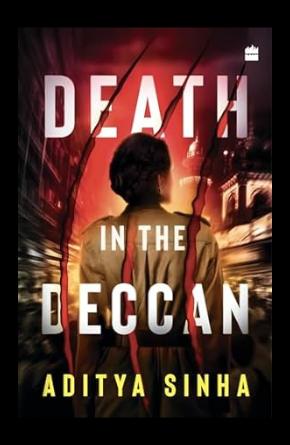
"Death in the Deccan" by Aditya Sinha is a gripping crime book that immerses readers in a complicated inquiry led by Assistant Commissioner of Police (ACP) Mona Ramteke. The narrative begins with a disturbing scenario: four employees of the faltering media company Deccan Testament suffers heart attacks on the same day As Mona investigates the case, she finds a network of secrets involving politicians, journalists, and businesses, all set against the backdrop of Hyderabad's vibrant and complex culture. The author’s writing abilities show through in this intriguing thriller, which combines investigative thrills with keen social critique. ACP Mona Ramteke emerges as a bold and dedicated protagonist who overcomes personal hurdles and cultural biases to solve the crime. Readers are attracted to Mona's world, eager to follow her search for the truth among murky relationships and secret objectives. The idea of "Death in the Deccan" initially piques interest with its interesting fundamental mystery: can four persons die of heart attacks simultaneously? Sinha expertly uses this idea to create a multifaceted narrative that keeps readers wondering throughout the novel The publication, Deccan Testament, is in financial distress, which complicates the issue by interweaving personal vendettas and anonymous threats Aditya Sinha's painstaking study for the story demonstrates his attention to detail, notably when the medical examiner reveals a murder method using air injection This disturbing revelation heightens the interest and demonstrates the author's dedication to creating a captivating and genuine crime story Despite the gravity of the research, Sinha injects moments of levity with humorous dialogue and brilliant insights, resulting in a balanced and fascinating reading experience. "Death in the Deccan" flawlessly integrates suspense, societal satire, and character development, yielding a fast-paced and engaging narrative. Sinha's journalistic experience comes through in his crisp writing and short storytelling style, which keeps readers interested with each new clue and surprising twist.
Overall, this story is a must-read for aficionados of crime fiction and complicated riddles, taking readers on an exciting trip with ACP Mona Ramteke as she uncovers the truths hidden beneath the intriguing realm of the Deccan Testament.
"Dream Machine: AI and the Real World" is a graphic novel that blends polemic, meditation, and fiction to warn against the dangers of corporatecontrolled generative artificial intelligence (gen AI) The novel contrasts "dreams" with "machines" to explore the potential ramifications of
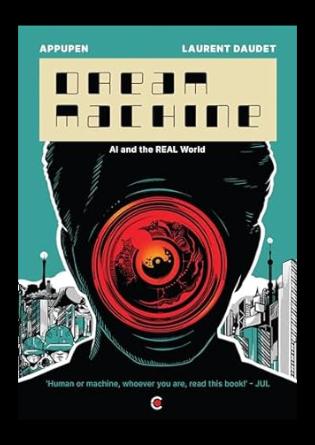
algorithms acquiring human-level intelligence and the influence on human unpredictability vs computational predictability The authors urge readers to explore the ethical implications of AI's progress and reject authoritarian pressures to exploit and control this transformational technology The story blurs the lines between fiction and reality, providing an entertaining perspective on the convergence of technology, ethics, and power dynamics Hugo, the central character in the graphic novel, represents the inner conflicts and dilemmas faced by individuals in a world increasingly shaped by AI, highlighting its impact on society. Appupen's creative talent shows through in the images that accompany the story, adding to the visual experience and complementing the thought-provoking ideas discussed in the book. The combination of ideas, science, and storytelling in "Dream Machine" offers an engaging and intellectually stimulating reading experience, allowing readers to consider a future in which AI enhances rather than limits human potential This graphic novel is a must-read for anybody interested in the growing landscape of AI and its tremendous influence on society It challenges us to design a future in which technology serves humanity's greatest interests while upholding ideals of reason, freedom, and justice To sum up, "Dream Machine: AI and the Real World" is an engrossing book that gets into the possible ramifications of AI, providing a relevant and emotional contemplation on the ethical and moral implications of technological advancement Through their collaborative work, Appupen and Daudet encourage readers to engage with the complex problems surrounding artificial intelligence (AI) and to use their imaginations to guarantee that technology will ultimately empower people rather than limit their potential.
This graphic novel provokes thoughtful considerations on how technology shapes our shared future and is a crucial contribution to the conversation on AI, ethics, and creativity.
STORIZENREVIEW
STORIZEN MAGAZINE | 41 APRIL 2024

Feminism emphasizes women's rights based on gender equality, recognizing biological distinctions but seeking equal chances in the social, political, and economic realms. The story of Lilith, an ancient emblem of independence and sexual emancipation, defies established gender conventions by refusing to submit to Adam Her story is still
significant today, as researchers during the second wave of feminism in the 1960s reexamined it through a feminist perspective, seeing her as a symbol of revolt against male authority and aspiring to confront oppressive systems and reclaim her story In this regard, Shinie Antony's book "Eden Abandoned: The Story of Lilith" is a riveting investigation of Lilith's cryptic narrative, questioning standard interpretations of her role as Adam's first wife in biblical mythology. In Antony's story, Lilith is portrayed as a feisty and aggressive lady sprung from the ashes of conventionality, representing feminine wrath and empowerment. Through Lilith's narrative, Antony explores themes of survival, love, and the complexity of desire, providing a raw and unedited portrait of a woman who defies society's standards and expectations. Lilith, a problematic figure in Jewish mythology, represents individuality and resistance to patriarchal control In "Eden Abandoned," Antony reimagines Lilith as a powerful and nuanced character, emphasizing her reluctance to submit to Adam's rule Lilith's biography highlights crucial themes about gender dynamics, sexuality, and the repercussions of exerting autonomy within existing power systems, positioning her as a symbol of empowerment and resistance to repressive standards Shinie Antony's writing in "Eden Abandoned" is commended for its seriousness and contemplative intensity, prompting readers to think about issues like femininity, strength, and self-determination As Lilith is expelled from Eden, the story becomes increasingly intense, delving into the complexities of her character and her quest for self-discovery. Antony's portrayal of Lilith defies conventional wisdom, providing readers with a new take on the biblical story of Adam's first wife. Overall, "Eden Abandoned: The Story of Lilith" is a thought-provoking work that questions traditional readings of biblical themes, portraying Lilith as a symbol of female strength and autonomy.
Shinie Antony's story urges readers to examine conventional beliefs and embrace the intricacies of female identity and agency, making it an engaging read for anybody interested in reinterpreted folklore and strong female characters.

A.J. Finn's "End of Story" transports the readers to a realm where mystery and reality converge, making us wonder where the lines are drawn between fact and fiction Mystery writer Sebastian Trapp, a solitary man, writes detective fiction specialist Nicky
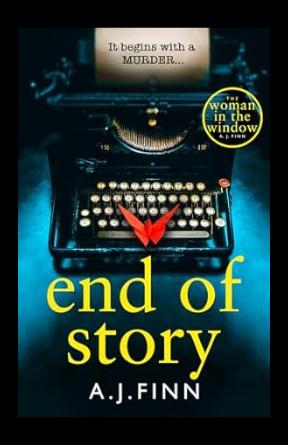
Hunter a mysterious note that reads, "I'll be dead in three months." Come share my narrative with me. Nicky accepts Trapp's invitation to his lavish San Francisco residence, where he will be spending his final months writing his life narrative. Nicky gets fixated on solving a long-standing mystery the disappearance of Sebastian's first wife and kid on New Year's Eve 1999 as she digs further into Sebastian's background "End of Story" is a captivating mystery novel that blends atmospheric noir, family secrets, and traditional detective fiction The narrative's rich texture and exploration of the past's lingering effects make it a captivating read The story, set in San Francisco, evokes a sense of 1930s and 1940s noir, with unexpected plot twists
A J Finn, known for his genre-redefining work, keeps readers guessing, while the fascination lies in the slow unraveling of secrets and the investigation of human nature
A J Finn's "End of Story" is a gripping narrative that centers on the mystery of Sebastian's existence and the intricate interplay between memory, guilt, and atonement The novel delves into the shifting borders between reality and fiction, with individuals serving as investigators and confidantes The novel is a literary journey that goes beyond the ordinary, changing people and reshaping history. It's a compelling book for anyone who enjoys classic mysteries or the human psyche. Finally, "End of Story" is more than just a mystery; it's a reflection of the stories we leave behind. Sebastian Trapp's invitation to Nicky Hunter exemplifies our yearning to make sense of our lives and find purpose amid the turmoil. As the novel progresses, we see that every life is a story waiting to be told one with secret chapters, unresolved puzzles, and unexpected turns
A.J. Finn's most recent work challenges us to go into the depths of narrative itself, taking us on an exciting and very personal trip.
STORIZENREVIEW
APRIL 2024 42 | STORIZEN MAGAZINE

Kiran Bir Sethi’s book, “Every Child Can,” is a sheer delight to read Effortlessly flowing, arranged in a logical sequence, and adorned with numerous anecdotes, it is imbued with profound wisdom Its appeal extends to a wide audience, encompassing students, teachers, parents, and any adult with children in their lives. The book brings alive the magic that is Riverside School. I call it magic because it ignites possibilities of what education can be and is on a daily basis. The school’s design principles revolve around keeping the whole child at the center and the belief that every child deserves an education that is relevant, rigorous, caring, and empowering Through its many anecdotes, the book makes visible what learning can look like when freed from the notions of exams, rote memorization, and mediocrity It describes learning processes wherein due to engagement and meaning-making, children remember every learning session they have been part of The emphasis on understanding the “why, what, and how” of a concept is refreshing The book spotlights the importance of documentation Unlike typical SOPs, which restrict thinking by telling people what and how to do, Riverside emphasizes the “why ” By sharing the origin story, they create opportunities for more people to understand the problem and iterate solutions if needed Riverside has acted on its belief in every child’s capabilities They’ve created systems, processes, and tools to ensure that every child can do good and well. The book inspires us to move beyond thinking alone and embrace action. Sethi applies design thinking to every aspect of a school, from timetables to curriculum, and even beyond the borders of the school. The model presented is brilliant, and the interactive QR codes throughout the text allow readers to explore how each element works in practice. In a world where education is crucial, Kiran Bir Sethi’s perspective on young people and her methods for helping them grow up should be known and replicated everywhere
“Every Child Can” is not just a book; it’s a beacon of hope and possibility. In summary, “Every Child Can” is not just a book; it’s a beacon of hope, possibility, and actionable wisdom for transforming education globally.
Ashley Elston's "First Lie Wins" is a fascinating thriller that dives into issues of identity, love, and deceit. The plot revolves around Evelyn Porter, a lady who lives a fake life under the appearance of a beautiful relationship with her lover Ryan, whom she was handed by her mystery employer. However, Evelyn's carefully crafted persona

begins to crumble as her true background catches up with her in the shape of another woman claiming to be her As Evelyn navigates this delicate scenario, she must confront her emotions as well as the terrible realities that threaten her life. The story is clever and crisp, engaging readers from the outset to the conclusion with high-stakes drama and unexpected plot twists. The cloak-and-dagger atmosphere heightens the suspense, producing a sense of urgency that keeps readers on edge. If you appreciate thrillers, including covert operations, secrets, and surprising disclosures, this is a must-read. In "First Lie Wins," the characters are meticulously designed to heighten the tension and provide complexity to the story Evelyn Porter, also known as Josie Thibodeaux, is a tenacious and cunning woman who leads a double life Her relationship with Ryan blurs the distinction between deceit and true feeling, making him a key player in Evelyn's high-stakes game Characters such as Emma, Evelyn's clever best friend, and Alex, the mystery love interest, provide depth to the plot, keeping readers wondering and intrigued until the conclusion Ashley Elston's writing style shines in "First Lie Wins," which combines crisp and succinct text with genuine dialogue that brings people to life Her storytelling talent keeps readers engaged in the plot, resonating with relevant themes and skilled character development Elston's outstanding use of the environment, notably the imaginary town of Truman, Louisiana, is critical to the plot's development and the entire reading experience. Truman's setting, marked by vivid descriptions and a distinct mood, heightens the tension and mystery surrounding Evelyn's clandestine existence. The town's close-knit society complicates Evelyn's connections, emphasizing the difference between her public image and hidden reality.
This novel, Reese's Book Club Pick for January, takes readers on a suspenseful rollercoaster trip in which nothing is as it appears. Elston deftly constructs a labyrinth of falsehoods and hidden motivations that combine in unexpected ways, enthralling readers throughout.
STORIZENREVIEW STORIZEN MAGAZINE | 43 APRIL 2024
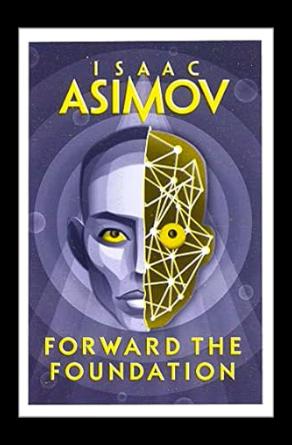
Isaac Asimov's "Forward the Foundation" is an appealing addition to the acclaimed Foundation series that demonstrates the author's skill in science fiction narrative This work, written as the penultimate volume before Asimov's death, brings a tragic end to his great career, enhancing
the wide cosmos he methodically created over decades The story revolves around Hari Seldon, a visionary mathematician whose research into psychohistory becomes critical as the Galactic Empire nears collapse The central theme of this captivating narrative is Seldon's race against time to save humanity's future amidst political instability and power battles, bringing readers further into Asimov's imaginary universe Asimov's distinctive language shows through in "Forward the Foundation," which combines accessibility, intellectual interest, and emotional depth. The author masterfully blends science, philosophy, and human drama via vivid characters and sophisticated plotlines, enthralling both long-time followers and novices to the series. Memorable people emerge throughout the story, adding to the vast fabric of Asimov's cosmos. Hari Seldon emerges as a clever and motivated protagonist, aided by his devoted wife Dors Venabili, whose knowledge and dedication are critical to the plot's development The enigmatic Eto Demerzel, Raych Seldon's personal development path, and the complexity of characters such as Namarti and Manella Dubanqua add levels of mystery and suspense to the plot "Forward the Foundation" explores themes of legacy, survival, and humanity's unbreakable spirit against the backdrop of cosmic change Asimov's literary talent is on full show, providing readers with a riveting and thought-provoking examination of the Foundation universe and its timeless significance
Finally, "Forward the Foundation" is a striking example of Isaac Asimov's writing mastery It doesn't matter if you've been a fan of the Foundation series for a long time or are unfamiliar with Asimov's writing; this book is a beautiful homage to a science fiction great whose influence has inspired countless numbers of readers.
"Grave Intentions (A Harith Athreya Mystery)" by RV Raman is a classic whodunit story with imaginative storytelling and a novel location. Raman, famed for his business thrillers, presents Harith Athreya in this series, combining
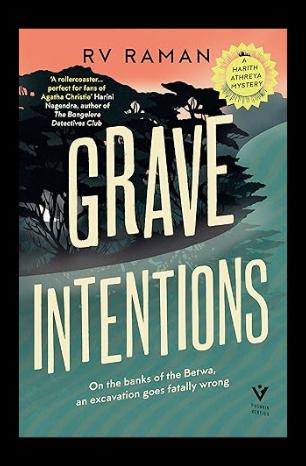
the charm of a gentleman detective with the appeal of a modern-day investigator. This second novel solidifies Athreya's reputation as a diligent investigator who navigates strange situations. The story takes place in Bundelkhand, where Athreya is assigned to investigate alleged financial theft during an archeological excavation The environment, which is rich in historical and mystical themes, serves as a captivating background As Athreya explores further, he meets a wide ensemble of individuals, each with secrets and reasons that are intertwined with the main mystery Raman's story is both complicated and approachable, providing a wonderful balance of depth and readability Harith Athreya emerges as an approachable protagonist, marked not by oddities, but by excellent observational abilities and a rigorous approach to crime investigation The story's speed keeps readers interested, and minor hints and red herrings add to the overall intrigue What distinguishes "Grave Intentions" is its vivid depiction of the archeological site and the relationships between the individuals. Raman's meticulous attention to detail gives the environment to life, transforming it into a character in its own right. The tale combines elements of a ghost story with a murder mystery, resulting in levels of intrigue that develop as Athreya uncovers the truth. While steeped in the classic detective genre, Raman's writing injects new life into familiar clichés. The book's success stems from its ability to elicit nostalgia for conventional mysteries while combining current features Athreya's journey to unearth buried facts against the gorgeous background of Bundelkhand is a compelling read All things considered, "Grave Intentions" is a gripping continuation of the Harith Athreya series, fusing outstanding scenery, a cast of fascinating people, and a creative narrative Raman's writing style, which strikes a balance between accessibility and tension, elevates this whodunit novel to a compelling level
This book promises to be a fun and engaging read, regardless of your preference for vintage detective fiction or your need for a gripping mystery
44 | STORIZEN MAGAZINE APRIL 2024 STORIZEN REVIEW
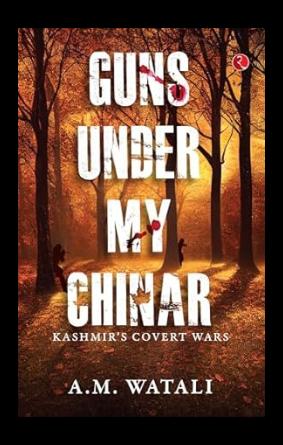
"Guns Under My Chinar: Kashmir's Covert Wars" by A.M. Watali, a former head of police in the Kashmir Valley, is a compelling and enlightening investigation of how covert warfare, espionage, and geopolitical maneuvers have molded Kashmir's volatile environment Watali
goes deeply into the core of Kashmir's conflict since 1947, detailing incidents such as Al Fatah's first bank heist, Indira Gandhi's failed assassination attempt, and the savage lynching of Ayub Pandit. His interactions with Mumbai underworld leaders like Karim Lala and Haji Mastan, as well as his survival of assassination attempts, give fascinating insights into a perilous world of intrigue. This carefully researched book is more than simply a tale; it bravely investigates the geopolitical intrigues of vested interests, revealing rare insights into a covert world full of untold stories "Guns Under My Chinar" urges politicians and historians to reconsider their perspectives on the Kashmir problem, acting as a wake-up call to tackle the complicated reality of the region's conflicts and power relations The book helps readers in following the progress of the clandestine war beginning in 1947
A M Watali explains how this covert jihad affected Indian policies in Kashmir and the political climate in the state, paying particular attention to the reasons behind the rise in jihadist violence in 1990 The author offers a sophisticated grasp of the bloody struggle in Kashmir and its intricate geopolitical ramifications through an in-depth historical study. In "Guns Under My Chinar," A.M. Watali tells the story of the state police's continuous efforts to restrain the increasing resistance movement, which was backed by Pakistani intelligence services, spanning four decades, from 1947 to 1989. Despite these efforts, A.M.Watali considers the ongoing possibility of opposition owing to young alienation and unsatisfied desires. He emphasizes the importance of a definitive settlement to the Kashmir issue between India and Pakistan based on the people's desire for long-term peace
A M Watali's purpose in chronicling these key historical events is to leave a genuine record for future generations, conveying the truth without prejudice or ideological bias
Overall, these biographical stories, interwoven into episodic threads, provide readers with a unique viewpoint on Kashmir's complicated history and the region's ongoing struggles
A.M.Watali's eyewitness stories and historical analysis work together to create a complete picture of the secret battles and geopolitical factors that have formed Kashmir's troubled history and present
Alice Oseman's "Heartstopper" series has become extremely successful since its inception as a webcomic on Tumblr and Tapas, with over 52 1 million views online Oseman's wonderful tale of youthful love now has a TV adaptation on Netflix, giving it a new depth in this TV tie-in version of the first book The book includes

Oseman's original artwork as well as images from the Netflix series, allowing fans to connect more deeply with their favorite characters "Heartstopper" is a graphic book series that explores the lives of Charlie, an openly homosexual adolescent, and Nick, a kind-hearted rugby player. The story explores themes of first love, friendship, and self-discovery, embracing LGBT love and representation. The series, written by Oseman, is a moving and profound exploration of identity and acceptance, addressing themes such as bullying, homophobia, mental illness, and eating disorders with respect and compassion. The graphic book approach allows readers to easily relate to the characters' struggles and successes The graphics in "Heartstopper" are both engaging and evocative, adding to the storytelling experience They brilliantly portray Nick and Charlie's emotional journey, from shared delight to profound emotions of desire and grief The graphic book style enhances the story, allowing readers to fully immerse themselves in the characters' world In the fifth volume, Oseman masterfully modifies the plot to address essential themes such as mental health, anorexia, familial bonds, and safe sex Oseman expands on the eating disorder narrative by digging further into a more serious and sensitive discussion of mental health and body image The narrative also reveals new aspects of the marriage, with Charlie striding into the spotlight with renewed confidence and Nick exploring his options for a university degree. Tori and her connection with Michael are also explored more, something I was particularly interested in. And, yeah, while it appears like Heartstopper will finish with the next book, people would welcome a spin-off. Overall, Alice Oseman's "Heartstopper" is a great YA romance that explores universal themes like love, friendship, and self-acceptance. It depicts LGBTQ+ relationships in a heartwarming manner and connects with readers via sympathetic characters and interesting writing
Whether you're a lover of graphic novels or looking for a heartwarming coming-of-age narrative, "Heartstopper" aims to fascinate and inspire, leaving an indelible impact with its honesty and emotional depth.
STORIZENREVIEW
STORIZEN MAGAZINE | 45 APRIL 2024
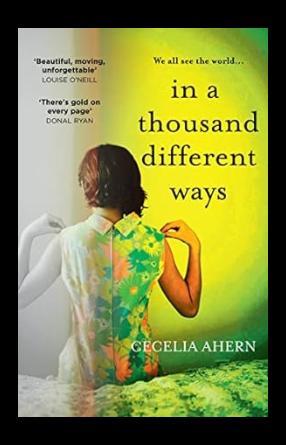
Cecelia Ahern's "In a Thousand Different Ways" introduces us to Alice Kelly, a lady who has had a remarkable gift since childhood: she can see people's emotions clearly depicted in colors What appears to be a gift transforms into a never-ending curse for Alice, who sees not only the best but also the darkest thoughts and emotions
of everyone around her The story follows Alice's turbulent struggle to discover herself within this incredible sensory experience Growing up in a dysfunctional family dynamic and bearing the brunt of her mother's unpredictable behavior, Alice copes by physically separating herself from the intense emotions she witnesses Ahern expertly illustrates Alice's effort to manage life while wearing sunglasses, gloves, and a face mask to protect herself from the emotional bombardment Ahern tells a moving story of Alice's journey from a shadowy existence to one of selfacceptance and connection with others. As Alice grows older, she faces the consequences of her talent and begins on a transforming quest to break free from solitude. Her narrative is one of perseverance, self-discovery, and the pursuit of the life she deserves. Alice's connections and road toward acceptance are central to the narrative. Ahern explores subjects such as family dynamics, mental health difficulties, and the intricacies of human relationships via rich characters and detailed narrative Alice's interactions with people who lack emotional hues present distinct obstacles, prompting her to confront her own assumptions and prejudices "In a Thousand Different Ways" is a thought-provoking examination of empathy, resilience, and the human experience Ahern's writing flawlessly mixes the spectacular and the routine, capturing the spirit of Alice's universe and encouraging readers to reflect on their own emotional landscapes With its interesting characters and captivating plot, this work demonstrates Ahern's writing talent and ability to build a truly entertaining and enlightening story Overall, "In a Thousand Different Ways" is a gripping and wonderfully written work that will stay with readers long after they've turned the last page
Cecelia Ahern's superb narrative and deeply created characters make this novel a moving investigation of identity, empathy, and the various shades of human emotion.

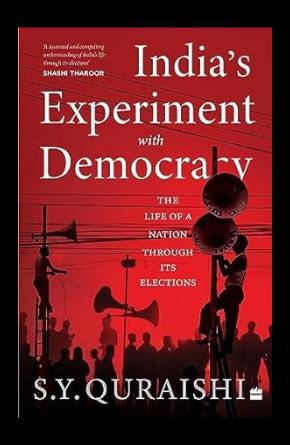
The COVID-19 epidemic has subsided, and 2024 promises to be a year of nonfiction literature Books on India's past, present, and future will be issued in conjunction with political landmarks such as the Ram Mandir and Lok Sabha elections Despite problems, India, the world's largest democracy, is thriving, with the forthcoming General Election was a watershed moment in global electoral history At this juncture, S Y Quraishi's "India's Experiment with Democracy: The Life of a Nation Through its Elections" provides an in-depth look at India's democratic journey, examining the complexities of its election system and the Election Commission's critical role As a former Chief Election Commissioner, Quraishi provides exceptional experience to his analysis, which ranges from electoral legal frameworks to the issues inherent in the world's biggest democracy The book's core focus is the drive for openness in political fundraising, which is critical to maintaining the integrity of elections. Quraishi emphasizes the importance of taking strict action against individuals who violate election rules and calls for the legalization of the Model Code of Conduct, which seeks to promote political responsibility. This brings to mind the Supreme Court's most recent ruling on Electoral Funds and the secrecy surrounding political parties. Quraishi's research explores the most discussed 'One Nation, One Election' proposal by Prime Minister Narendra Modi, assessing its practicality and potential impact on development He emphasizes the benefits of regular elections, their role in accountability, and grassroots involvement Quraishi also explores the link between money and politics, highlighting the dangers of unbridled financial power and the need for comprehensive changes
Finally, "India's Experiment with Democracy" is an engaging story about the obstacles and opportunities that exist inside India's democratic system Quraishi's in-depth analysis, based on years of experience, provides readers with a sophisticated understanding of India's electoral environment
This book is required reading for those seeking a better knowledge of India's democratic growth, as evidenced by Quraishi's passionate demand for increased civic involvement and democratic discussion.
46 | STORIZEN MAGAZINE APRIL 2024 STORIZEN REVIEW
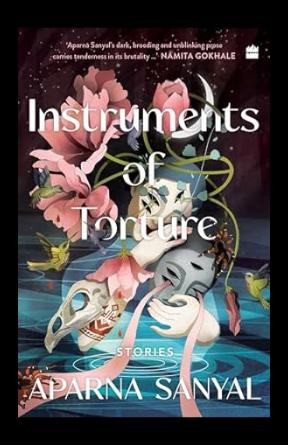
Embark on a spine-chilling expedition through the annals of history with "Instruments of Torture," by Aparna Sanyal is a gripping examination of the brutal and macabre devices employed during the Middle Ages to inflict excruciating pain and suffering. This book unveils the sinister realm of sadistic creativity, where torture tools such as the Iron Maiden and the Judas Cradle were meticulously designed to maximize human torment. As you traverse the darkest corners of humanity's past, prepare to confront the most chilling manifestations of cruelty and the astonishing ingenuity behind these gruesome contraptions. This unconventional dark novel, "Instruments of Torture," goes beyond the usual tropes of eerie sounds and mysterious silhouettes Instead, it delves deep into the intricacies of the human mind when it is most fragile Through a series of narratives, this collection metaphorically connects medieval torture tools with intense psychological anguish, portraying individuals facing inner conflicts magnified by societal expectations and suppressed yearnings By reflecting on concealed truths, the book presents a distinctive literary journey that is both disquieting and intellectually stimulating Aparna Sanyal's writing and skills shine brilliantly in this work The author's ability to make strong linkages between psychological torment and physical pain is what distinguishes this book Readers are made to confront the deep emotional scars caused by discrimination, humiliation, and the unwavering quest for normalcy via violent storytelling. "Instruments of Torture" presents a literary investigation of the darkest aspects of the human experience, asking readers to confront discomfort and reflect on the intricacies of human nature even though the subject matter might be upsetting. For anyone looking for a frightening and thought-provoking trip through some of history's worst moments, "Instruments of Torture" is a must-read. This book offers a horrifying yet illuminating viewpoint on medieval brutality and its longlasting psychological effects, shocking and upsetting readers in equal measure This anthology offers a scary and unique reading experience if you're willing to face the disturbing facts concealed beneath the human brain For further reference, such writings were published in the Telugu language in the 1940s In the latter half of the twentieth century, sociology emerged as a prominent field of study Christian missionaries traveled extensively during this period, including to various countries Famous Telugu writer Taapi Dharma Rao, around the 1940s, began documenting the customs, languages, and traditions of indigenous peoples in these regions Frazier's "The Golden Bough" is an earlier collection of similar ethnographic information, which broke new ground in the study of human evolution. During those times, while tutoring
the sons of zamindars (landlords), Rao gained access to scriptures from various countries, enabling him to deepen his understanding His second book, "Inupa Kacchadaalu" (The Chastity Belt), caused quite a stir among Telugu readers and is credited with challenging the foundations of the Western Church These groundbreaking works preceded Darwin's theory of biological evolution
In Tasha Marikkar's book "Jaya Flava: A Celebration of Food, Flavour, and Recipes from Sri Lanka," she takes readers on a vivid culinary tour that highlights the country's rich cultural tapestry and different ethnic backgrounds. This first cookbook has eighty delectable recipes
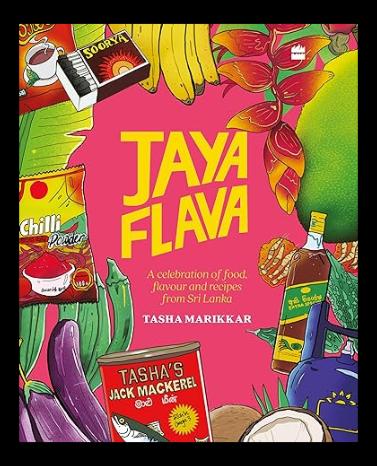
that pays tribute to Sri Lanka's rich culinary history, all of which are simple to make and perfect for beginners
Inspired by her mixed ethnic heritage (Sinhalese, Ceylon Moor, and Colombo Chetty), Marikkar's distinct viewpoint shapes a collection of genuine dishes that honor the nation's multicultural cosmos. The book is more than simply a collection of recipes; it's a visual feast with vibrant graphics, pictures, and compelling layouts that encapsulate the essence of Sri Lanka. Marikkar's rigorous study goes outside the kitchen to explore the history and significance of each dish, tracing its roots via oral histories and interviews
Despite the difficulties of recording Sri Lankan cuisine and attributing recipes to their specific communities, Marikkar's passion guarantees that each recipe in "Jayaflava" celebrates Sri Lanka's heartfelt relationship to food, flavor, and legacy Marikkar emphasizes the similarities between Sri Lankan cuisine and South Indian, Dravidian, and Tamilian cuisines, notably in the Jaffna region Sri Lankan Tamil food is influenced by southern Indian spices and seafood from the Jaffna peninsula, and it is comparable to Indian cuisine The cookbook's sweets, which include jaggery, rice flour, coconut, and sesame seeds, are reminiscent of both Sinhala and Tamil cuisines, reflecting Marikkar's ancestry and culinary influences from the Indian Dravidian area. "Jaya Flava" encourages readers to recognize the compassion, thankfulness, and cultural variety inherent in Sri Lankan cuisine. Sri Lankan cuisine celebrates tradition, identity, and common humanity via the transmission of transgenerational wisdom and the adaption of culinary components from many civilizations. The book has a vivid cover design, engaging pictures, and wellorganized text. Tasha Marikkar, the author, discusses her love of cooking as well as her family history, creating an immersive experience for both seasoned cooks and food lovers Whether exploring simple home-cooked meals or spectacular feasts, this cookbook emphasizes the lasting importance of food in building Sri Lanka's cultural identity and culinary heritage.
STORIZENREVIEW
APRIL 2024
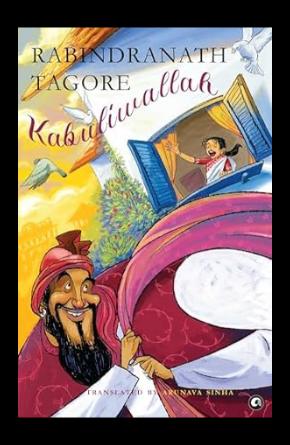
Rabindranath Tagore's "Kabuliwallah " is a moving and timeless narrative that speaks to its readers Set in colonial Calcutta, the story focuses on an odd friendship between Mini, a lively five-year-old child, and Rahmat, a traveling Afghan fruit trader Initially frightened of Rahmat's commanding
presence, Mini is captivated by his generosity and unusual gifts, forming a friendship that transcends age and class boundaries. Tagore's narration takes a tragic turn as Rahmat's past unfolds, expressing his longing for his nation and relatives left behind His unexpected detention disturbs their innocent friendship, leaving Mini sad and readers eager for their relationship to continue Years later, Mini meets Rahmat again on her wedding day, a sad reunion that emphasizes the fleeting nature of childhood and the intricacies of life Tagore explores issues of memory, grief, and the lasting power of true connections via this interaction "Kabuliwallah " is a succinct yet powerful composition that showcases Tagore's evocative language while vividly presenting imperial India and exploring universal human emotions This lovely and thoughtprovoking narrative stays with the reader long beyond the last page, reminding us of Tagore's enduring legacy as a storyteller and his ability to capture the core of human emotions. In this regard, discussing my experience visiting Rabindranath Tagore's residence, Jorasanko Thakur Bari, Kolkata, is a bizarre experience. I got the opportunity to walk inside and see where tourists may study his clothes, room, articles, books, and many more In barely an hour, one may comprehend Tagore's deep work and crosscultural significance.
The grandeur of his family house reflects his artistic tendencies, encouraging others with creative aspirations to explore his many art forms and legacy. His work reflects his home and his home itself is a library of stories.
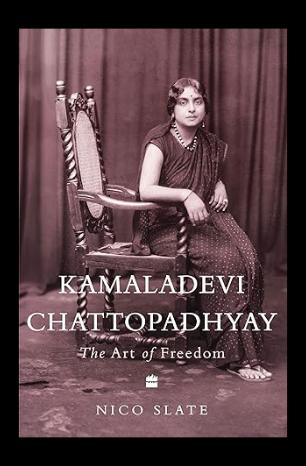
The thoroughly researched and exquisitely portrayed biography "Kamaladevi Chattopadhyay: The Art of Freedom" by Nico Slate brings back to life the life and legacy of a remarkable lady who defied classification. The varied career of Kamaladevi Chattopadhyay, which included work in theater, handicrafts, nationalist politics, and feminist advocacy, reflects the turbulent history of contemporary India The book gives readers an in-depth look at Kamaladevi's complex personality, her steadfast devotion to freedom, and the conflicts that molded her remarkable life Nico Slate's biography introduces readers to Kamaladevi Chattopadhyay, a lady who was ahead of her time She was born in colonial Mangalore in 1903, the daughter of an affluent mother and a self-made father However, her life was everything from ordinary Kamaladevi's trip included continents, ideas, and causes She was a novelist, activist, and visionary who made a lasting impact on India's cultural and political environment Her legacy goes beyond any one label, whether it's freedom warrior, feminist, or reformer Instead, she pushed the boundaries, continually fighting for equal rights, women's empowerment, and the resurrection of traditional arts and crafts. It was revolutionary of Kamaladevi to propose that women take part in the independence movement. She posed a challenge to Gandhi, saying that women need to be involved in every aspect of the movement to the same extent. Despite her refusal to accept the title, her support for birth control, equal political rights, and sexual autonomy made her a feminist icon. Nico Slate does a fantastic job depicting Kamaladevi's varied career She wasn't limited to a certain cause or function She traversed a variety of industries, from socialist action to nationalist politics, from refugee rehabilitation to theater Her habit of always having a typewriter with her and writing wherever she went was a testament to her unwavering commitment Kamaladevi, a prominent Indian feminist, advocated for civil and human rights in the United States and promoted traditional arts and crafts in India She established institutions like the Indian Cooperative Union and the Sangeet Natak Akademi
Despite her failure to create a cooperative-driven metropolis for Partition refugees, Kamaladevi's life defied easy classification and left a lasting legacy
48 | STORIZEN MAGAZINE APRIL 2024 STORIZEN REVIEW

Dr. Sara Nasserzadeh's book, "Love by Design: 6 Ingredients to Build a Lifetime of Love," offers a new and practical perspective on what it takes to develop long-lasting and happy relationships
Drawing on her considerable expertise as a psychologist and relationship specialist, Dr. Nasserzadeh outlines six critical components that create the cornerstone of successful partnerships: connection, communication, commitment, compatibility, compassion, and creativity. Each element is thoroughly explored, providing readers with useful insights and effective techniques for their own relationships. The book is based on scientific research and enhanced with human experiences and anecdotes, making it more approachable and entertaining Dr Nasserzadeh emphasizes the significance of knowing each other's needs, desires, and beliefs, and she provides couples with tools and activities to help them connect and communicate more effectively By tackling typical relationship concerns such as dispute resolution, adultery, and financial stress, she provides readers with realistic solutions to these problems "Love by Design" questions traditional wisdom about love and emphasises the need to cultivate a long-term connection rather than pursuing transient moments of thrill Couples can start on a journey of self-discovery and mutual understanding by engaging in deliberate activities and suggestions that promote personal growth and shared goals Whether readers are enjoying the delights of new love or looking to deepen long-term relationships, this book is an invaluable resource for anyone dedicated to creating lasting love. Dr. Nasserzadeh's approach is caring and empathic, encouraging couples to embrace a development mentality in their relationships. She emphasizes that all relationships take effort and devotion to succeed, and her book provides practical advice for couples at whatever point of their journey together.
"Love by Design" is a thorough and simple handbook that teaches readers how to build the fundamental ingredients required for a lifetime of love, making it a must-read for anybody looking for a better understanding of relationship dynamics and interpersonal relationships.
"Mad Honey" tells a gripping story via the voices of prominent authors Jodi Picoult and Jennifer Finlay Boylan As a committed Picoult reader, I was pulled to this work by its familiar storytelling style, but I also discovered Boylan's distinct take on the subject Olivia McAfee and Lily
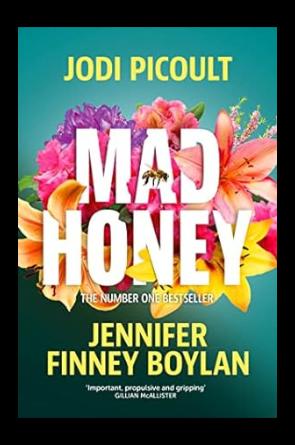
Campanello's alternating voices tell a moving story of love, sorrow, and the lingering effects of abuse. In "Mad Honey," Olivia McAfee navigates life as a beekeeper, inheriting her father's passion after exiting an abusive marriage. Her son, Asher, finds consolation in a growing romance with Lily, a high school senior fleeing her own traumatic background. The writers expertly weave Olivia's post-incident perspective with Lily's preface, revealing the intricacies of their interwoven lives Initially, readers may be hesitant to recognize connections with Picoult's prior books, notably "The Pact " However, "Mad Honey" deviates, revealing unexpected story twists that test characters and readers alike The novel challenges privilege and unconscious biases, encouraging observations that go beyond the pages Picoult's acclaimed research improves the story by smoothly incorporating beekeeping knowledge into Olivia's character and adding depth to her beliefs Readers will find "Mad Honey" to be one of Picoult's most intriguing works It dives deeply into the fundamental topic of what love really means The story examines the numerous types of love that exist in the world Does a parent's love for their child cloud their judgment about the youngster's possible guilt? Are we drawn to people or their souls? How far will we go for love? Is love truly unconditional, or do we unconsciously establish restrictions to protect ourselves and others from harm? Despite its length, "Mad Honey" is an engrossing read, driving readers through its pages with great narrative. As the court case revolves on Asher's arrest for Lily's murder, secrets are revealed, ending in a tidy climax that embodies the spirit of the novel's themes.
Fans of Picoult's past books will recognize familiar characters woven throughout Asher's defense team, and Boylan's nuanced writing style adds a unique layer to this joint masterwork.

STORIZENREVIEW STORIZEN MAGAZINE | 49 APRIL 2024

"Only Love Can Hurt Like This" by Paige Toon is a beautifully written story that will pull at your heartstrings and leave you emotionally saddened Toon's ability to conjure the force of love is excellent, making this novel a compelling read about family, secrets, and the temptation of
romance The story follows Wren and Anders, who are both dealing with devastating events in their lives Wren's engagement ends when she realizes her fiancé is in love with someone else, while Anders is still plagued by the death of his wife years before Their paths intersect during Wren's summer visit to her father's farm in Indiana, laying the groundwork for a captivating and heartbreaking adventure Author Paige Toon succeeds in character development, portraying Wren as a multifaceted protagonist dealing with betrayal and fury Her interactions with Anders and their neighbors, particularly Jonas, provide a profound examination of love's unexpected nature. Anders, battling with his own grief and fragility, emerges as a powerful yet emotionally complex figure. The novel's setting enriches the story, with Indiana's lovely cornfields and fireflies serving as a stunning background. Toon's evocative descriptions and emotional writing flawlessly weave together moments of pain and warmth, making the story both heartbreaking and familiar. "Only Love Can Hurt Like This" is a must-read for enthusiasts of love stories, combining uplifting and heartbreaking moments
Paige Toon's skilled narrative keeps readers interested, exploring themes of love, sorrow, and the intricacies of relationships. It's a novel that lingers long beyond the last page, providing a moving and unforgettable reading experience.
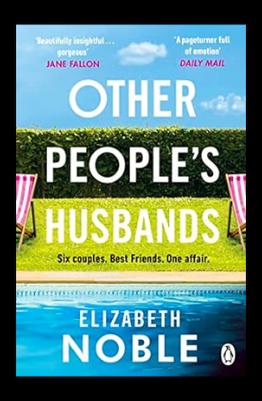
"Other People's Husbands" delves into the complicated dynamics of friendship and love, demonstrating how a single betrayal may shatter long-held connections among a group of close friends. Set against the backdrop of two decades of shared experiences, the drama delves into human emotions and relationships in a compelling way. At first sight, the large ensemble of characters in "Other People's Husbands" may appear overwhelming, but Elizabeth Noble's superb writing rapidly hooks readers into each individual's life. Despite the large number of characters, the plot revolves around six ladies, each of whom is different and authentically presented Natalie, the main character, navigates the consequences of her betrayal with depth and complexity, making readers empathize with her flaws and goals Author Elizabeth Noble expertly explores themes of love, betrayal, and the complexities of human relationships The tale depicts the consequences of a single impulsive act, demonstrating how lives may disintegrate when boundaries are breached Noble navigates the difficulties of relationships with understanding and compassion, thanks to strong character development and a well-crafted tale The emotional depth and realism of the narrative are its strongest points Noble's tale unfolds over nearly 500 pages, weaving a tapestry of guilt, anguish, and redemption The characters struggle with their own faults and shortcomings, making them both approachable and interesting. The author's sophisticated investigation of adultery and its consequences provides readers with a thought-provoking look at human nature. "Other People's Husbands" demonstrates the strength of female companionship and perseverance. Despite the obstacles the protagonists confront, Noble depicts their relationship with tenderness and authenticity The work encourages contemplation, asking readers to ponder the intricacies of commitment, forgiveness, and the enduring power of relationships
With its vivid style and fascinating storyline, "Other People's Husbands" is a riveting and emotionally resonant book that stays with you long beyond the last page.

50 | STORIZEN MAGAZINE APRIL 2024 STORIZEN REVIEW

Kaushik Basu's "Reason to Be Happy: The Unexpected Benefits of Thinking Clearly" is a riveting investigation of the power of strategic reasoning and game theory, providing insights that go beyond economics to everyday decision-making and life's philosophical challenges In this
smart and amusing book, Basu, a distinguished economist, invites readers to use the frequently undervalued ability of clear thinking to negotiate personal and social issues, eventually striving for long-term satisfaction and better outcomes The book opens with an intriguing question: why do some people have more friends than others? How do we get the greatest seat on a plane? Basu skillfully uses these questions to dive into the logic of social circumstances, revealing how game theory may be used to improve personal well-being and promote good change Basu explains the practical advantages of rational thinking by drawing on his experiences as an economist, which include advising governments and institutions He encourages readers to explore different views and anticipate reactions during conversations Basu's humorous narratives and thinking exercises make game theory more accessible and relevant, giving a road map for strategic decision-making in both personal and professional contexts. He highlights the importance of understanding other people's motivations and responses, highlighting how this knowledge may lead to better outcomes and more happiness. Basu's philosophical strand, which touches on stoicism and determinism, enriches the narrative and encourages readers to contemplate the complexities of human conduct and societal systems One of the book's notable parts delves into the paradoxes inherent in rational behaviour, such as 'Greta's Dilemma' and 'guilt shelters,' giving light on how good intentions may often result in unforeseen consequences Basu's investigation into communal decision-making and economic inequality provides new insights into social welfare and policy design, questioning traditional thinking and providing novel remedies Throughout, Basu's storytelling approach and ability to demystify complicated topics make "Reason to Be Happy" a fascinating and illuminating read for anybody looking to improve their decision-making abilities and comprehend the interconnectivity of individual actions and social effects Finally, "Reason to Be Happy" is a powerful demonstration of the power of strategic thinking and logic in obtaining personal fulfilment and promoting constructive change. Kaushik Basu's approach to game theory and decision-making is not just practical but also encourages readers to consider larger philosophical problems about human behaviour and society dynamics. This book is an excellent resource for anybody looking to manage life's complexity with clarity and purpose, as it provides a new perspective on happiness and the pursuit of meaningful results through strategic thinking.

Arnab Ray's "Shakchunni" is a contemporary reinterpretation of Bengali folklore, crafting a terrifying narrative set in 1940s Bengal amid the Great Famine and World War II. The story focuses on the Banerjee family, rich zamindars who rule over Shyamlapur Their lives become linked
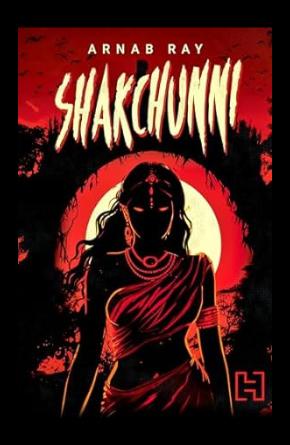
with the tale of the Shakchunni, a malevolent ghost that possesses married women The drama develops amid a real sense of terror and foreboding, encapsulating the spirit of rural Bengal's cultural dynamics as well as the advancing forces of modernity Ray expertly investigates the role of myths and stories in determining human behaviour and social control
Through the Banerjees and their interactions with the Shakchunni, the narrative explores issues of patriarchy, female empowerment, guilt, and the repercussions of exploitation The author's detailed account of Bengal's countryside during British control adds dimension to the story, creating a realistic image of a community wrestling with old conventions in the face of a changing world. The horror in "Shakchunni" is subtle but effective, foregoing traditional jump scares in favour of a tense and atmospheric storytelling technique. Ray's language evokes the era's tension as well as the psychological torment of his characters, notably Narayanpratap Banerjee and his wife Soudamini, who are forced to confront otherworldly forces and family secrets. The novel's cinematic beauty and finely created characters add to its immersive appeal, holding readers' attention until the climactic end Overall, "Shakchunni" is an engrossing investigation of folklore and socioeconomic dynamics, expertly combining horror with historical fiction Arnab Ray's storytelling talent shows through, taking readers on a thought-provoking trip through the darkest depths of myth and humanity
With its vivid writing and riveting plot, "Shakchunni" exemplifies Ray's ability to create an intriguing and atmospheric novel that stays with you long after you've finished it.
STORIZENREVIEW STORIZEN MAGAZINE | 51
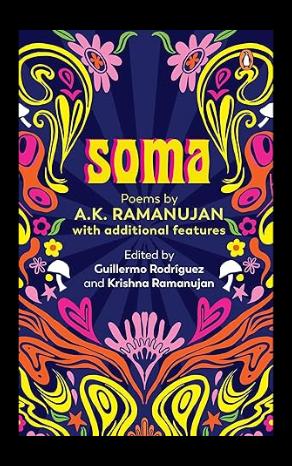

"Soma" by A K Ramanujan is a remarkable collection of primarily unreleased poetry on the mystical realm of the Soma plant Soma, published by Guillermo Rodriguez and Krishna Ramanujan, features 22 poems from A K Ramanujan's papers at the University of
Chicago. These poems revolve around the Soma plant, which is thought to have mystical, consciousness-altering abilities. In Hindu mythology, gods and priests ingested Soma during rites The collection contextualizes these poems with studies that examine Soma's historical relevance and connection to Ramanujan's creative process A K Ramanujan, born on March 16, 1929, in Mysore, India, was a versatile literary personality known for his contributions to poetry, translation, linguistics, and folklore studies His life has been defined by intellectual curiosity, linguistic study, and a strong dedication to literature and culture Soma is a treasure trove for fans of A K Ramanujan's work These poems, frequently rejected drafts, provide insight into Ramanujan's thoughts throughout the 1970s and early 1980s They reflect his mind-altering experiences and lyrical vision, making them an important part of literary history The Soma Plant serves as a metaphor for altered states of consciousness, creative creativity, and hidden truths. Ramanujan's obsession with Soma is consistent with his capacity to transform the ordinary into the exceptional. Krishna Ramanujan's writing discusses the significance of Soma in Vedic rites and gives historical background to the writings and setting. Guillermo Rodriguez explores Ramanujan's perception of Soma and how it influenced his creative creativity. To make sure that these poems are not forgotten in library boxes, Soma brings back to life a lesser-known version of Ramanujan It deepens our comprehension of his genius by capturing a pivotal point in his oeuvre In a nutshell, Soma encourages readers to investigate the mysterious, forgotten, and transformational
It's a lyrical elixir that remains long after the last page; his poetry addresses universal subjects, pushing readers to investigate the human condition and the secrets of existence.
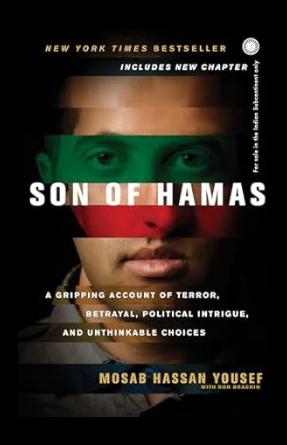
"Son of Hamas" by Mosab Hassan Yousef offers a gripping and insightful perspective on the Israeli-Palestinian conflict through the eyes of the son of a prominent Hamas leader. The book delves into the transformation of Mosab from a staunch supporter of Hamas to a collaborator with the Israeli intelligence agency, Shin Bet, shedding light on the complexities and realities of the conflict Mosab's narrative provides a compelling account of the rise of Hamas from its early days to becoming a significant player in the Middle East's political landscape
Through his personal experiences growing up in Ramallah amidst the turmoil of the region, readers gain a deeper understanding of the challenges faced by individuals caught in the midst of political and ideological conflicts
The author's journey from hatred towards Jews to a profound shift in perspective towards understanding and even loving them adds a poignant layer to the narrative
Mosab's revelations about the manipulations and selfserving agendas of Palestinian leaders offer a critical examination of the leadership dynamics that perpetuate the conflict and hinder peace efforts. "Son of Hamas" also addresses the contentious issue of stone-throwing in the conflict, highlighting the complexities and dangers associated with this form of protest. Mosab's reflections on the impact of such actions on both sides underscore the urgent need for constructive dialogue and effective leadership to move toward a sustainable resolution. Mosab Hassan Yousef's perspective on the IsraeliPalestinian conflict differs from other perspectives due to his unique background, personal transformation, critique of Palestinian leadership, and emphasis on human experiences His insights offer a nuanced and empathetic understanding of the conflict that challenges readers to consider the complexities and personal stories behind the headlines Overall, "Son of Hamas" written in 2010 and published again recently, is a thought-provoking and enlightening read that challenges readers to consider the multifaceted nature of the Israeli-Palestinian conflict
Mosab's firsthand account offers a unique perspective that encourages reflection on the role of leadership, the power of personal transformation, and the potential for reconciliation in a deeply entrenched conflict.
This book is highly recommended for those seeking a deeper understanding of the complexities and human experiences behind the headlines of the IsraeliPalestinian conflict.
52 | STORIZEN MAGAZINE APRIL 2024 STORIZEN REVIEW
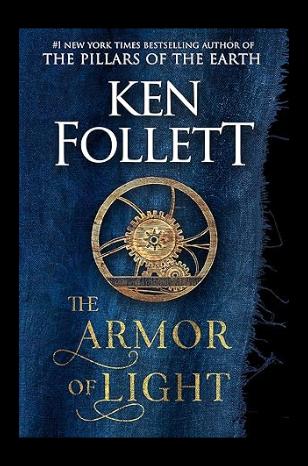
Ken Follett's Kingsbridge trilogy is a literary journey through various periods and nations The series includes four novels, with a fifth planned The first, "The Pillars of the Earth," takes readers to Kingsbridge, a fictitious town with a cathedral. The second, "World Without End," explores 14th-century Kingsbridge, while the third, "A Column of Fire," takes readers to the 16th century. Set in the late 18th century, the fourth novel, "The Armor of Light" explores the tension between development and tradition as innovative innovations like the Spinning Jenny alter society. Follett weaves together the lives of a broad array of individuals, each dealing with personal and societal issues in the midst of dramatic upheaval. From a mother seeking justice for her husband's working disaster to a young lady fighting for destitute children, the story eloquently depicts the intricacies of the time Follett's story expertly examines class strife and income discrepancies, showing a society in which greed and compassion meet Set against the backdrop of Napoleon's ascendancy in Europe, the people in Kingsbridge face seismic transformations that leave them coping with the legacy of war and the enormous challenge of rebuilding "The Armor of Light" continues Follett's status as a master of historical fiction, following in the footsteps of his best-selling novels such as "The Pillars of the Earth " With rigorous attention to detail and fascinating writing, Follett transports readers to a key time in history, where the effects of change resonate through the lives of his lively characters
To summarize, "The Armor of Light" is a must-read for historical fiction aficionados, with a riveting combination of detailed historical knowledge, complex character development, and dramatic narrative.
Follett's ability to reduce complicated historical events into real human experiences distinguishes this work as a noteworthy contribution to the Kingsbridge series, enthralling readers from start to finish.
Emily Ballesteros' "The Cure for Burnout" is a detailed and informative approach to dealing with burnout. Ballesteros, who specializes in industrial-organizational psychology, proposes a three-part strategy for understanding, managing, and eventually overcoming burnout in this self-

help guidebook She begins by explaining the many varieties of burnout, which range from overload to social burnout and boredom, before delving into five critical pillars for overcoming burnout: mentality, personal care, time management, boundaries, and stress management. The book's strength is its usefulness. Ballesteros presents readers with a multitude of skills and tactics for taking control of their lives, ranging from effectively setting boundaries to reframing cognitive habits. Each chapter contains engaging tales and real-world examples, making the material approachable and easy to implement Despite the extensive covering of the subject, the author's warm and approachable writing style maintains reader interest throughout One of the book's most notable elements is its emphasis on self-compassion and mindfulness Ballesteros calls for a shift in perspective, encouraging readers to prioritize self-care and develop more positive attitudes toward stress and productivity The book is more than just a theoretical examination of burnout; it is also a practical guide intended to enable people to make substantial changes in their everyday lives The book offers practical burnout management tactics such as boundary setting, stress management, and self-care It takes a holistic approach to understanding and overcoming burnout, including insights into various forms and treatments. The information is timely, particularly given today's hectic work situations and the impact of the epidemic. The book emphasizes self-compassion, relaxation, and community responsibility as treatments for burnout. However, it has flaws such as long material, recurring themes, a gender bias, and the necessity for expert assistance The book may appear to be lengthy, yet it is definitely worth reading
The precise explanations and specific strategies guarantee that readers have a solid grasp of burnout and the skills to tackle it effectively. Ballesteros' book is an invaluable resource for anybody dealing with burnout, providing a novel viewpoint and uplifting message on the necessity of self-compassion and perseverance in overcoming life's problems.
STORIZENREVIEW
STORIZEN MAGAZINE | 53 APRIL 2024

Because it may provide an escape from existential concerns about mortality, supernatural literature continues to be widely read In this genre, mystery, suspense, and otherworldly beings are frequently included, with intrigue taking precedence over action and adventure
Moreover, supernatural literature explores dark and uncharted territory by fusing supernatural aspects with detective fiction principles. Set in Durban, South Africa, Shubnum Khan's "The Djinn Waits a Hundred Years" is a compelling combination of historical story and paranormal mystery The plot unfolds over two connected timeframes, giving it a fairy-tale feel that keeps readers interested from beginning to end Sana, the heroine, unravels the mystery of Akbar Manzil, a colonial house converted into apartments, all while dealing with her own frightening personal difficulties The house, packed with vivid Indian immigrants, serves as a background for a dreamy story that blurs the distinction between fact and fiction
The novel deftly intertwines history and present, depicting the narrative of Akbar Ali Khan, an Indian immigrant in 1919, and his difficult relationships within the great home he constructs Khan's journey parallels Sana's quest to discover the mysteries concealed within Akbar Manzil, which leads her to journals that reveal a complicated saga of love, treachery, and cultural disputes. Khan's wife, Jahanara, and his second wife, Meena, represent opposing wants and ambitions set against the backdrop of colonial Durban. Khan's writing style creates a sense of surprise and mystery, evoking the mansion's secrets and mirrored the emotional agony of its residents. Sana's journey reflects her search for love and acceptance, drawing parallels between her own struggles and historical characters The story explores themes of love, grief, and perseverance "The Djinn Waits a Hundred Years" is a captivating historical fiction novel by Shubnum Khan, examining ethnic identity, familial relationships, and love's eternal power The novel spans time and place, offering a complex analysis of human experiences It is a must-read for readers who enjoy engrossing narratives and intriguing characters set against a backdrop of history and magic
Khan's skill as a storyteller and her ability to create a unique reading experience make her a literary masterpiece

Reading "The Earth Quakes: Late AntiStories by Subimal Misra," translated by V Ramaswamy, transports readers into a realm of experimental fiction that defies traditional narrative. Subimal Misra, a Bengali writer recognized for his antiestablishment mindset, presents a collection of twenty stories (1991-2010) that
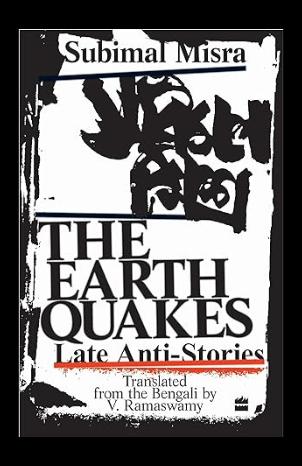
challenge typical narrative patterns and prompt readers to profound contemplation. Ramaswamy's translation conveys Misra's linguistic complexity by stressing the author's use of multiple Bengali registers, ranging from ascetics language to street vernacular, which presents distinct hurdles in English translation. Misra's creative disobedience extended from form to substance, as he deliberately avoided mainstream publishing, disseminating his work through lesser-known Bengali publications and selling his novels independently at book fairs His rejection of copyright reflects a larger mindset of attacking established power institutions, with a specific focus on the organized left, notably West Bengal's Left Front administration Misra's novels are interrogations of power dynamics, undermining standard political rhetoric by depicting the intricacies of human connections against the backdrop of societal change Navigating Misra's stories requires intellectual agility His narrative approach, as shown in "The Great Renunciant," entices readers with seeming simplicity before leading them down a rabbit hole of characters and views Ramaswamy accurately replicates Misra's hard grammar while retaining the purposeful ambiguity that distinguishes Misra's language The reader is drawn into a textual maze, forcing them to confront Misra's anti-literary approach, which requires active participation and critical evaluation. Author Subimal Misra's emphatic caution that his writing is not for passive consumption is repeated throughout the book. Misra's unique storytelling, such as "A Green-Coloured Asur at the Idol under a SingleRoofed Pavilion and Below, Placed Visibly, the Symbolic Bride Made up of Nine Leaves," pushes readers beyond their comfort zones, requiring mental strain and patience. Each narrative fragment, jump cut, and language innovation defy traditional storytelling, demonstrating Misra's dedication to challenging literary standards "The Earth Quakes" eventually demonstrates Misra's bold worldview His narratives, replete with vignettes of marginalized life and political opposition, resist easy interpretation While some may find Misra's writing style perplexing, he encourages readers to confront hard facts and challenge conventional narratives Misra's impact is rooted not just in his language innovation, but also in his emphasis on involving readers as active players in decoding his unsettling tales, making "The Earth Quakes" an intriguing and thought-provoking read for anyone ready to face its challenges
54 | STORIZEN MAGAZINE
STORIZEN REVIEW

"The Hippo Girl and Other Stories," a collection of stories by Shah Tazrian Ashrafi, explores the complex web of human emotions against a backdrop of violence, sadness, and resiliency It provides a moving and realistic portrait of life in Bangladesh. In thirteen evocative pieces, Ashrafi explores themes of love, sorrow, and the resolute human spirit, capturing the essence of Bangladeshi living. Set against the melancholy backdrop of the 1971 Bangladesh Liberation War, the pieces in this anthology have a raw and searing honesty. Ashrafi expertly weaves together stories of humans dealing with inner issues and finding consolation or forgiveness in the shadows of history. The violence depicted both in households and on the streets has an enduring impact, mirroring the protagonists' grim reality The symbolism of hippos appears frequently in Ashrafi's works These animals, which are frequently connected with evil and disturbance, serve as a metaphor for the chaos and malevolence that permeate the individuals' lives, exacerbated by external factors Through rich words and striking imagery, Ashrafi adds complexity to the story, allowing readers to confront the mysteries of existence Violence and anguish pervade the stories, evoking the scars of war and human tragedy The author effectively explores how sorrow alters lives and relationships, showing individuals who are dealing with intense emotional distress Despite the gloom, themes of perseverance and survival emerge, emphasizing the Bangladeshi people's unwavering spirit in the face of hardship. Ashrafi's depiction of human intricacy is stunning. Each figure embodies authenticity and complexity, reflecting the diverse aspects of existence. The author uses a subtle narrative to tackle social justice concerns and family dynamics, giving light to inequity, injustice, and the complexities of interpersonal relationships. Finally, "The Hippo Girl and Other Stories" is a captivating and thoughtprovoking anthology that asks readers to consider the threads that connect us all love, sorrow, perseverance, and the unwavering pursuit of happiness in the face of life's ups and downs
These stories resound strongly because of Ashrafi's straightforward style and profound observations, leaving a lasting impression on those who immerse themselves in this vivid tapestry of Bangladeshi life.
Ruskin Bond's "The Hoopoe on the Lawn" is a charming story of youthful wonder and surprising revelations. During his winter vacation, eleven-year-old Ruskin goes to his grandmother's house in Dehra, where he has several magical occurrences. Ruskin's adventures take place in the
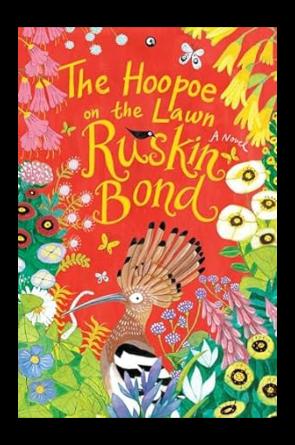
backdrop of historical events such as contacts with Quit India protestors and the beauty of nature, with characters ranging from a playful ghost in an ancient peepul tree to a mystery guy with a tin box of curiosities. Ruskin takes comfort in the companionship of eccentric people and the frequent visit of a hoopoe bird in his grandmother's yard despite everything. Bond's narrative skill is evident as he encapsulates the essence of friendship, amazement in youth, and the small pleasures in life. Throughout the narrative, Ruskin's encounters with a whimsical hoopoe bird in his granny's garden at 3 p m each day add a touch of magic to his holiday escapades Bond's storytelling is imbued with nostalgia and a deep appreciation for the natural world, as Ruskin marvels at the beauty of pretty weeds he dubs 'Purple Hearts' and relishes the excitement of uncomfortable yet exhilarating tonga rides "The Hoopoe on the Lawn" is not only a delightful read for children but also a treasure trove for Ruskin Bond enthusiasts With playful illustrations scattered throughout the book, Bond's vivid descriptions and evocative prose bring to life a world where the ordinary is infused with extraordinary charm This book is sure to captivate young readers and kindle their imagination, encouraging them to embrace the magic of unexpected friendships and the simple joys of being young. The story "The Hoopoe on the Lawn" showcases Ruskin Bond's talent for crafting gripping, emotive, and reader-friendly novels for a broad audience. This book is a must-read for everybody searching for a heartfelt read about the wonders of life and the eternal magic of childhood because of its cleverly constructed narrative and likable characters.
With a colorful cover, this book is a treasure for anybody who appreciates the craft of storytelling and a welcome addition to Ruskin Bond's library because of the way he narrates it a style that captures the essence of simplicity and wonder.
STORIZENREVIEW
STORIZEN MAGAZINE | 55 APRIL 2024

Judson Brewer offers a ground-breaking strategy for changing our connection with food and our bodies in "The Hunger Habit: Why We Eat When We're Not Hungry and How to Stop " Renowned addiction psychiatrist and neuroscientist Brewer provides readers with more than just
another diet book; his research explores the science of habit development and mindfulness to enable readers to overcome cycles of guilt and shame related to overeating. Using our brains to our advantage instead of against them, putting more emphasis on self-kindness than self-judgment, and raising awareness to alter our eating patterns are all fundamental components of Brewer's method. Brewer's programme is both approachable and compassionate, drawing on cutting-edge neuroscience and decades of therapeutic experience Through relevant anecdotes and practical mindfulness practices, he helps readers understand and overcome eating difficulties by being more aware of their urges and cultivating self-compassion The Hunger Habit dispels myths about emotional eating, suggesting that food is both a bodily and emotional necessity The book differentiates between physical and emotional hunger, emphasising that emotional hunger is abrupt and frequently results in dietary-induced disorders such as anorexia, bulimia, and obesity It emphasises the need to find healthy diversions, recognise mistakes, and understand that eating does not satisfy the brain Brewer also recommends obtaining medical assistance, such as psychotherapy, medication, and weight control programmes. Brewer's technique focuses on raising awareness about food choices and how they affect our emotions, questioning the concept that some meals are intrinsically appealing. We may progressively adjust our behaviours towards healthier choices by teaching our brains to recognise the impact of our actions on our well-being. The book's planned 21-day programme gives readers specific actions and exercises to help them use these strategies in their daily lives, creating long-term, sustainable transformation without relying on restrictive diets Overall, "The Hunger Habit" provides a novel alternative to typical dieting methods, emphasising mindfulness and selfcompassion as crucial components in improving our relationship with food Brewer's observations and tactics offer a road map for breaking free from old eating habits and adopting a more intuitive, rewarding approach to nutrition
Whether you're battling with overeating or just want to live a healthy lifestyle, this book provides practical strategies for listening to your body's messages and making conscious decisions that benefit your health
"The Indian Vegan - The easy recipes for Everyday Cooking" by Sonal Ved is a ground-breaking cookbook that showcases how seamlessly plant-based concepts can be incorporated into traditional Indian cuisine, hence revolutionizing notions of veganism Ved offers a wide range of vegan dishes that honor the complexity and

diversity of Indian tastes while sticking to strict research and a profound grasp of regional Indian cooking The book delves into a wealth of regional cuisine, ranging from the hearty Ladakhi chutagi to the nutritious and ecologically sustainable Keralan ulli theeyal and Manipuri kelli chana The book's author, Sonal Ved, chronicles her path to veganism, providing a personal and approachable viewpoint on adopting a plant-based diet Author Sonal Ved, a longtime vegetarian from Gujarat, discusses her switch to a largely plant-based diet, emphasizing the health benefits and ethical issues that prompted her dietary change Ved urges readers to explore and find nutritional choices that are in line with their well-being and ideals, drawing on her personal experiences The culinary investigation of "The Indian Vegan" extends beyond recipes to the historical and cultural aspects that form Indian vegan food. Sonal Ved, the author, explains how plant-based textures have been a vital part of Indian cooking for generations, highlighting unique recipes such as 'kele ki machli' and 'dhoka'r dalna' that creatively replicate meat-based textures. The book also includes an enticing dessert section, illustrating Ved's commitment to creating dairy-free sweets that equal classic Indian meethai in flavor and enjoyment Apart from its delicious food, "The Indian Vegan" illuminates India's growing vegan food industry and its consequences for sustainability and mitigating climate change The cookbook written by author Sonal Ved is proof of the vegan movement's continued popularity and expansion as a way of life that is closely linked to moral and environmental issues
"The Indian Vegan" is a valuable resource for experienced cooks, aspiring vegans, and anyone wondering about the relationship between Indian cuisine and plant-based lifestyle, thanks to its unique combination of creative recipes, cultural insights, and personal tales
56 | STORIZEN MAGAZINE APRIL 2024 STORIZEN REVIEW

Mitch Albom's novel "The Little Liar" is a moving and thought-provoking work that explores history, dishonesty, and redemption In The Little Liar, Albom transports readers from a seaside Greek city during the Holocaust to America. The hazards of deception and the grace of redemption eternally affects the connected lives of three survivors: Nico Crispi, his brother Sebastian, and their schoolmate Fanni. Nico, an innocent eleven-year-old child, unknowingly contributes to the deaths of his loved ones and other Jewish citizens at Auschwitz. Nico never reveals the truth again. As the decades pass, Albom shows the repercussions of their acts, as well as the ability of love to redeem us. The story is set during the Holocaust and provides a fresh viewpoint on this historical event. Rather than focusing exclusively on the events, Albom digs into the aftermath, investigating the repercussions of lying and the long-term impact on survivors The narrative focuses on the complexity of remorse, survival, and the weight of secrets, notably Nico's development from an honest boy to a pathological liar, resulting in a very emotional journey One remarkable component of Albom's narrative is his decision to speak in the voice of Truth itself This unique viewpoint compels readers to confront the repercussions of deception and provides insights into the possibility of atonement Themes of vengeance and loyalty run throughout the story, emphasizing how our actions resonate throughout time and influence those closest to us Despite its historical context, "The Little Liar" has global appeal, touching on timeless themes of honesty, survival, and the desire for atonement that are pertinent to modern readers wrestling with comparable moral quandaries. In conclusion, Mitch Albom's story is a touching fable that emphasizes the power of truth and love.
Thus, Little Liar is a timeless investigation of human weakness and perseverance, leaving a lasting impression on anybody who reads it.
"The Making of a Value Investor: What a Bear Market Taught Me About Investing" by Gautam Baid is an engrossing and introspective trip through the world of investing, particularly during a severe bear market Baid, a well-known investor and author, offers his own comments,
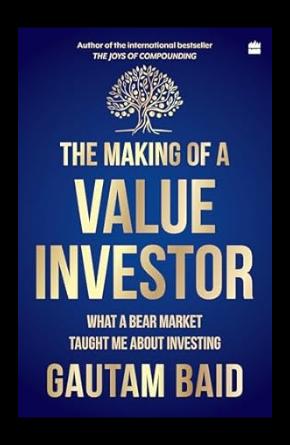
observations, and learnings during a difficult market era in his investing diary, giving readers essential insights on managing financial markets and building resilience. The book is organized chronologically and includes insightful hindsight commentary that sheds light on the eternal financial ideas that Baid uncovered throughout this turbulent period. Baid's ability to expertly convey his communal experiences and connect readers to his growing perspective demonstrates his narrative brilliance. One of the most notable aspects of "The Making of a Value Investor" is the author's candor and sensitivity in discussing his personal successes and mistakes By doing so, Baid delivers a sympathetic and uplifting story that inspires readers to reconsider their financial methods and accept the challenges that come with market volatility The book is especially useful for people interested in value investing since Baid provides in-depth insights into the essence of this investment strategy This book provides a full description of Gautam's journal during the bear market, allowing readers to understand how market emotions alter regularly during difficult times and how difficult it is for investors to remain involved in such situations These are Portfolio Manager Gautam Baid's daily takeaways from the big small-cap/mid-cap bear market in India from January 2018 to March 2020. It's fascinating to read a long-term value investor's perspectives, beliefs, disbeliefs, learnings, and forecasts on unforeseen occurrences over a protracted period of carnage. To summarise, "The Making of a Value Investor" is an educational and interesting read that weaves together personal experiences, investing expertise, and timeless ideas to form a captivating story.
Whether you're a seasoned investor or just starting out, this book provides vital insights that will help you build resilience and make educated decisions in the face of market unpredictability.
STORIZENREVIEW
STORIZEN MAGAZINE | 57 APRIL 2024

From the opening page of Katy Brent's latest thriller, "The Murder After The Night Before," readers are drawn into a tornado of mystery, dark comedy, and suspense Molly, the protagonist, awakens with a severe hangover, a stranger in her bed, and, to her surprise, she discovers herself
at the heart of a global controversy As if that wasn't enough, she soon discovers that her closest friend Posey has died under strange circumstances. Determined to discover the truth, Molly plunges deeply into a thrilling story of treachery, deceit, and surprising turns. Brent's storytelling draws the readers from the start. The story begins with Molly's unsettling morning after, laying the groundwork for an unwavering search of answers. As Molly sets out to establish Posey's murder, her world closes around her, rife with distrust and suspicion The author expertly exploits Molly's flawed memory to heighten the suspense, encouraging readers to join in her confusion and fear Brent's book is a unique blend of black comedy and social criticism, exploring themes of misogyny, bereavement, and social media while focusing on a murder investigation Molly, a rambunctious and irreverent heroine, arouses sympathy and admiration due to her sincere development and bravery The novel features viral tweets and internet comments to give it a genuine feel The supporting cast adds nuance and complexity to Molly's world, making the story more rich overall To summarize, "The Murder After the Night Before" is a must-read for aficionados of dark comedic thrillers I got the opportunity to read author Katy Brent's earlier work, "How to Kill Men and Get Away With It". It is a dark thriller about Kitty Collins, an IT girl and secret avenger who must negotiate the complications of murder and retribution. In "The Murder After The Night Before," Katy Brent provides a narrative that entertains and connects in equal measure, as she did in "How to Kill Men and Get Away With It.".
"The Murder After The Night Before" is a captivating thriller by Brent, combining comedy, suspense, and emotional depth. It features engaging characters and plots that leave readers wondering.
Jeet Thayil's "The Penguin Book of Indian Poets" is a significant collection that captures the vast and diverse terrain of Indian poetry in English This remarkable anthology brings together the voices of 94 poets and approximately 1,000 poems spanning decades to show the history of Indian literary language Thayil's rigorous

curation ensures that this anthology covers a broad range of subjects, genres, and styles, making it the ultimate depiction of Indian poetry One of the most notable features of this anthology is its broad representation of poets Thayil intentionally includes both renowned and young writers, demonstrating the range and energy of modern Indian poetry The anthology crosses geographical borders, exposing voices from throughout India while also highlighting the subcontinent's cultural richness It demonstrates the constantly shifting character of Indian literature in English Thayil's contextualization of Indian poetry in global and historical contexts lends depth and value to this collection His preface, "Extinction Violin," encourages readers to interact with pressing issues in our changing society, emphasizing the importance of Indian poetry in larger socio-cultural debates The collection examines the influence of the internet and social media on modern poetry, highlighting the sincerity and immediacy of young poets' voices. "The Penguin Book of Indian Poets" explores a wide range of topics, including love, identity, politics, and nature. The anthology includes both classic poetic forms and experimental poems, demonstrating the variety and originality of Indian writers. This anthology acts as a link between ancient traditions and modern expressions, honoring the history of previous anthologies while charting new territory for Indian poetry Overall, "The Penguin Book of Indian Poets" is a literary treasure trove that reflects India's varied lyrical environment as well as the eternal power of language It is a must-have for poetry enthusiasts, providing a thorough survey of Indian poetry in English while also emphasizing the enormous effect of varied voices on the world literary arena
Jeet Thayil's painstaking editing and subject depth make this anthology a must-have for any poetry enthusiast's collection.
58 | STORIZEN MAGAZINE APRIL 2024 STORIZEN REVIEW
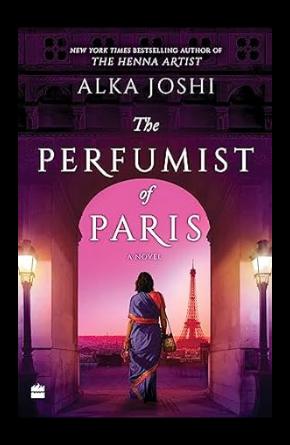
The intriguing finale to the Jaipur Trilogy is "The Perfumist of Paris" by Alka Joshi, which immerses readers in a world of aromatic creativity and personal metamorphosis against the backdrop of Paris in the 1970s The main character of "The Henna Artist," Radha, starts a new chapter in her life when she moves to Paris and realizes that fragrance is her actual love She also starts a path of creative discovery The story continues as follows: In 1974, Radha, a thirty-two-year-old Parisian living with her husband Pierre and their kids, works at a perfumer's store and develops a fondness for smells She collaborates with her friend's granddad and creates fresh scents for customers Radha's first significant undertaking is to go to India in order to serve as a courtesan and woo a son But she finds that the son is endangering both her marriage and her well-run household The rich background of Parisian perfume and art perfectly captures Radha's journey into the realm of perfumery Radha creates customized perfumes influenced by the aromas of the city blooming flowers, busy markets, and secret courtyards all of which support her creative development. Alka Joshi's painstaking study is evident in this process. The book explores themes of love, aspiration, and creative satisfaction while following Radha as she faces obstacles in her personal and professional life. Radha returns to India in search of direction from her sister Lakshmi and the Agra courtesans. Amidst the colorful tapestry of India, she discovers the missing piece of her creative jigsaw. Alka Joshi transports readers on Radha's voyage of selfrealization and metamorphosis via her vivid narrative Joshi's writing style allows readers to vividly feel every aspect of Radha's world, from the intricacies of Parisian life to the moving details of perfume-making
In addition to being a gripping conclusion to the Jaipur Trilogy, "The Perfumist of Paris" demonstrates Joshi's skill at telling complex stories that are realistic and emotionally charged.
Folk literature, including epics, ballads, and fables, is a vital part of India's cultural heritage. It preserves India's literary legacy, imparts moral lessons, and shapes human nature, offering insights into emotions, family, and spirituality
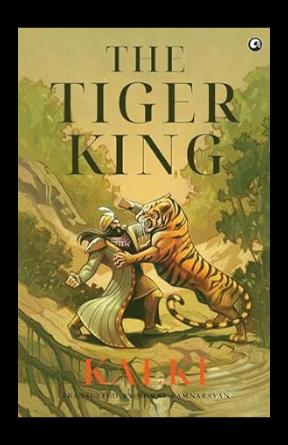
Kalki's "The Tiger King" is a gripping and humorous folklore story that delves into the absurdity of power and fate. Set in the fanciful kingdom of Pratibandapuram during colonial times, the plot focuses on the eccentric Maharaja and his unwavering determination to defy a prophecy by hunting down a hundred tigers. Kalki creates a wonderful story full of sharp wit and humor, transporting readers on a trip through the Maharaja's extravagant desires and the repercussions that ensue. It is a satirical story on pride and power. It talks about a king in preindependence India who was brought up in the most lavish lifestyle The story begins with the Maharaja's unusual upbringing and the prophetic prophesy of his death by the hundredth tiger Driven by a superstitious dread, the Maharaja goes on a tiger-killing rampage, causing chaos and hilarity across his realm As the Maharaja's fascination increases, the novel delves into issues of hubris, delusion, and abuse of power, providing a thought-provoking critique of rulers and their self-serving activities Kalki's tale is full of sarcastic twists and hilarious features that keep the reader interested from beginning to end Gowri Ramnarayan's superb translation captures the beauty and flavor of the original Tamil text, allowing readers to fully enjoy Kalki's tale The Maharaja's mistaken pursuit and final collapse serve as a cautionary tale, emphasizing the folly of pursuing destiny without consideration for the consequences. "The Tiger King" is more than simply a narrative about tiger hunting; it's a profound examination of human nature and societal standards. Kalki's portrayal of the Maharaja urges readers to consider topics like as ambition, fate, and the ephemeral nature of power. The story's sarcastic twists and satirical features highlight the author's condemnation of authoritarian authority and the corrupting impact of power
Overall, "The Tiger King" is an engaging book that combines humor with profound truths, leaving readers with a lasting sense of the intricacies of life and fate.
STORIZENREVIEW
STORIZEN MAGAZINE | 59 APRIL 2024

Author Arefa Tehsin's story in “The Witch in the Peepul Tree”, set in the bright background of 1950s Udaipur, dives into the complexity of a murder case, as well as concerns of privilege, power relations, and caste inequities The narrative begins with the horrifying discovery of Sanaz Apa's
lifeless body on Makar Sankranti, a day usually spent kiteflying. As the tale unfolds over the course of 24 hours, the author skillfully reveals the socioeconomic pressures of post-independence India, creating a deeply layered narrative that captivates the reader. The plot revolves around Dada Bhai's aristocratic household, where mistrust reigns among family members and household staff following Sanaz's unexpected death. Characters such as Rao Sahab, the zamindar with a secret crush on Sanaz, and Parijat, the mistreated sanitation worker, are delicately woven into the fabric of the inquiry Tehsin delves into the complexities of human behavior through their interactions and inner dialogues against the backdrop of altering cultural conventions Arefa Tehsin's approach differs from a traditional murder mystery in that it includes societal criticism She methodically depicts the changing environment of an independent India, drawing attention to themes such as caste injustice and gender relations Because the author highlights the weaknesses and ambitions of persons facing significant obstacles in a world that is changing, the reader is able to connect with these characters As the narrative develops, Tehsin expertly reveals the deeper consequences of the murder, going beyond the limitations of a standard whodunit. Through her keen observations, she depicts the battle between tradition and modernity, privilege and marginalization, pushing readers to consider deeper societal assumptions that still reverberate today. "The Witch in the Peepul Tree" is more than just a murder mystery; it showcases Tehsin's narrative abilities. Her work, strengthened by her animal conservation experiences, elegantly combines cultural insights with an engaging story
Ultimately, this story is a riveting read that not only entertains but also stimulates thinking on long-standing societal issues.
Reading the Bible recently has been eyeopening and inspiring It shows timeless virtues like compassion, forgiveness, and faith that guide us through life's challenges
Stories like David's bravery and Abraham's strong faith give hope and courage Jesus' parables teach us about kindness, humility, and love in our relationships Each passage

helps us think about our values and how to live a fulfilling life. The Bible has enriched my spiritual journey, offering practical wisdom for daily life and showing how virtues shape who we are and how we relate to others In this connection, “Think Ahead: 7 Decisions You Can Make Today for the God-Honouring Life You Want Tomorrow” by Craig Groeschel, the founding and senior pastor of Life Church, is designed to help readers understand the science behind their decision-making habits, overcome decision fatigue, diminish the role of emotions, and make life-defining pre-decisions that will lead to a fulfilling and God-honouring life Here, Groeschel shares his personal experiences and insights as a counselor with others who have struggled with poor decision-making He emphasizes the importance of making decisions ahead of time rather than in the heat of the moment when stress, fear, or emotions can cloud judgment. The book is filled with thought-provoking exercises and questions for reflection, making it an engaging and interactive read. This book by Stephen Groeschel focuses on the concept of "pre-deciding," which encourages readers to make seven life-defining predecisions to shape their future lives. The book combines spiritual wisdom with practical insights, offering tangible steps for personal growth rooted in biblical principles. Groeschel uses relatable anecdotes and real-world examples to share his own experiences and the stories of others He advocates for intentionality and mindfulness in decision-making, encouraging readers to approach life with purpose, vision, gratitude, resilience, and meaningful relationships The book's strength lies in its fusion of spiritual wisdom with actionable insights “Think Ahead: 7 Decisions You Can Make Today for the God-Honouring Life You Want Tomorrow” is a book that teaches readers about decision-making habits, overcoming decision fatigue, and making life-defining pre-decisions for a fulfilling life It provides practical advice and a biblical foundation, making it a valuable resource for improving decision-making skills and living a more fulfilling life
The book empowers readers to become intentional in their journey towards becoming the individuals they aspire to be in Christ, focusing on purpose, joy, and fulfilment.
60 | STORIZEN MAGAZINE APRIL 2024 STORIZEN REVIEW

Marc Zao-Sanders' book "Timeboxing: The Power of Doing One Thing at a Time" is an incisive analysis of the time management approach known as timeboxing, which is intended to increase productivity and intentionality in daily life As someone interested in living more consciously, I found this book to be a refreshing introduction to incorporating timeboxing into everyday activities Marc ZaoSanders draws on his personal experiences to provide practical advice and direction on how to properly use this strategy The book is organized in a user-friendly fashion, allowing users to consume its material in reasonable chunks Each chapter is supplemented with activities and reflection questions, making it simple to apply timeboxing ideas to daily life Zao-Sanders takes a pragmatic approach, breaking down the process into manageable stages that may be easily implemented "Timeboxing" emphasizes the value of deliberate scheduling in today's fast-paced environment With so many distractions, this strategy provides an effective way to recover control of everyday chores and increase productivity. The book urges readers to prioritise progress over perfection, instilling a culture of continual growth and focusing on important tasks. For individuals feeling overwhelmed by never-ending to-do lists, "Timeboxing" offers practical techniques for regaining control and focus. Readers might feel more accomplished and less stressed by designating allocated time blocks to certain assignments. Zao-Sanders advocates for simplicity and efficiency, encouraging readers to embrace the learning process and tailor the system to their specific requirements The author's personal tales and scientific discoveries present a strong argument for implementing timeboxing as a transformational discipline While the book is largely aimed at professionals and knowledge workers, the ideas are relevant to a variety of lifestyles Readers may improve their productivity and well-being by breaking down their days into specified tasks and taking regular breaks In summary, "Timeboxing: The Power of Doing One Thing at a Time" is an excellent resource for anybody looking to improve their time management skills and live more intentionally While the book might need more varied examples, it successfully illustrates the benefits of timeboxing and offers practical tools for implementation.
I suggest this book to everyone trying to optimize their schedules and increase their attention and efficiency in their everyday life.
"Troubled Waters," Nandini Krishnan's English translation of Kalki Krishnamurthy's acclaimed classic, tells the enthralling story of the Chozha Empire amid political intrigue and dynastic turmoil This translation perfectly captures the
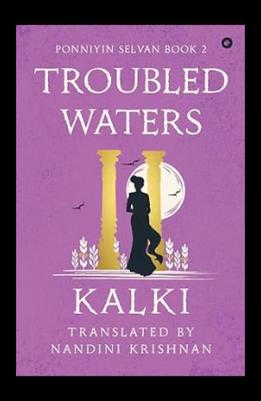
essence of Kalki's original work, combining historical depth with modern accessibility The work, written in lyrical writing, exemplifies the peculiar style known as 'Kalki Tamil,' in which vernacular meets erudition and vivid imagery dances with ecstatic prose Readers are pulled into a universe where characters such as the powerful Pazhuvoor Ilaiya Rani, Nandini, and the daring hero Vandiyadevan command attention due to their depth and complexity The story of "Troubled Waters" moves at an unnerving pace, keeping readers intrigued and eager to comprehend the unfolding events Characters develop dynamically, testing assumptions and adding levels of fascination to the story The enigmatic influence of Pazhuvoor Ilaiya Rani over her prominent husband, as well as the pain endured by Crown Prince Aditya Karikalan, arouse interest and suspense. Vandiyadevan's mission to convey an important message, as well as Azhvarkadiyaan Nambi's desire to meet Nandini, add to the plot's intricacy. Kalki's serialization in "Ponniyin Selvan" revolutionized Tamil writing, developing a distinct style that mixed vernacular with knowledge and wordplay with vivid imagery. Nandini Krishnan's translation captures the appeal of the original while being accessible to current audiences The lush descriptions of Sri Lanka, as well as the mesmerizing representation of cultural events such as the Perahera celebration, enhance the story and transport readers to a wonderfully detailed historical setting "Troubled Waters" is more than just a translation; it is a proud and genuine tribute to the Ponniyin Selvan series The book's ability to keep readers engrossed till the early hours says eloquently about the author's narrative abilities and the book's compelling nature As the second volume in the series, this translation maintains a balance of historical richness and contemporary accessibility, ensuring that Kalki's timeless masterpiece reaches a new audience Additionally, it's worth mentioning the film adaptation of "Ponniyan Selvan," Parts 1 and 2, conceived and directed by acclaimed Tamil filmmaker Mani Ratnam.
With a stellar cast, the movie serves as a visual tribute to Kalki's epic story of "Ponniyan Selvan. Reading the book brings out characters with realism.
STORIZENREVIEW
STORIZEN MAGAZINE | 61 APRIL 2024
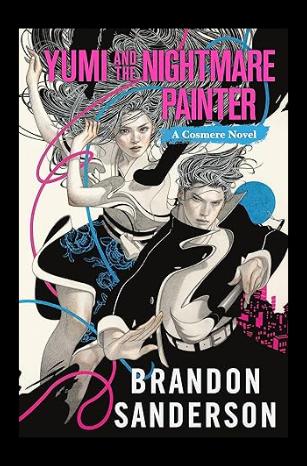
"Yumi and the Nightmare Painter," Brandon Sanderson's recent book, is a gripping read that skillfully combines fantasy, romance, and linked worlds The tale centers on Yumi and Painter, two characters whose lives suddenly entwine, and are set in two distinct realms: Kilahito,
a world enveloped in darkness and nightmares, and Torio, a dazzling kingdom of spirits and tranquility. Stories by Sanderson feature a distinct and captivating storyline that is engaging and enjoyable. The complex world-building and character-driven narrative of the book are its strongest points. A strange incident forces Yumi, a yoki-hijo priestess, and Painter, a nightmare painter in Kilahito, into each other's worlds. As they switch roles and work together to solve the riddles that are endangering their communities, Sanderson skillfully leads them on a path of discovery and collaboration Identity, friendship, and the ties that transcend planets are among the topics explored in this novel, which is reminiscent of the dynamics between characters in Hikaru no Go Because of Sanderson's readable and captivating writing, "Yumi and the Nightmare Painter" stands alone as a treasure in his larger Cosmere universe The novel has a perfect pace, building to a gratifying climax through a steady build-up The story's emotional center, Yumi and Painter's developing love is realistic and grounded despite its surreal environment Despite their difficulties, readers will get engrossed in the characters' development as individuals and their relationships Yumi and Painter's passion evolves elegantly, against a backdrop of lovely scenery and heartbreaking situations. Sanderson's story effectively addresses their personal problems and the transformational power of empathy. The numerous story twists keep readers guessing, culminating in a surprising and very touching ending. Through Painter's passionate paintings and Yumi's spiritual aptitude, the tale celebrates art, endurance, and the eternal hope that connects diverse individuals. "Yumi and the Nightmare Painter" demonstrates Sanderson's narrative talent and ability to create a captivating independent piece Rich in symbolism and philosophical depth, the novel's passionate portrayal of love, resilience, and the power of creation has a lasting influence Fans of Sanderson's work will enjoy the intricate world-building and connections to the Cosmere universe, while newbies will find an easy way into his innovative narrative
Ultimately, this is a story that speaks to the eternal pull of fantasy and the triumph of the human spirit in the face of adversity.

"Fluke - Chance, Chaos, and Why Everything We Do Matters" by Brian Klaas takes readers on a captivating journey through the intricate web of life's unpredictability, revealing the profound impact of chance on our existence With a diverse range of topics spanning sociology, politics, philosophy, and science, Klaas
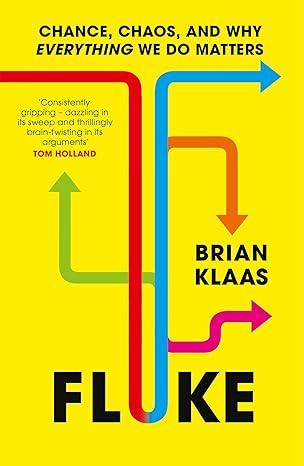
invites readers from all walks of life to explore the interconnectedness of our world. One of the most compelling aspects of the book is Klaas's exploration of the illusion of control in our lives Through engaging anecdotes and thought-provoking examples, he demonstrates how seemingly insignificant events can lead to significant consequences, challenging our perception of agency and control For instance, he shares the story of H L Stimson, whose decision during WWII to spare lives in one part of the world while condemning others to death elsewhere highlights the unpredictable nature of historical events
Klaas's ability to make complex ideas accessible to readers of all backgrounds He seamlessly weaves together personal narratives, historical accounts, and scientific concepts to illustrate his points, making the book both informative and engaging By grounding abstract concepts in real-life experiences, Klaas brings depth and nuance to his exploration of chance and human agency. Moreover, Klaas's reflections on his own family history add a poignant dimension to the narrative. By sharing how events from his past continue to shape his present, he underscores the interconnectedness of generations and the ripple effects of individual actions. This personal touch not only humanizes the themes of the book but also prompts readers to reflect on their own place in the broader tapestry of existence
Throughout the book, Klaas maintains a conversational tone that invites readers to think critically and engage with the material Rather than presenting definitive answers, he encourages readers to ponder the complexities of life and draw their own conclusions In doing so, he empowers readers to embrace uncertainty and find meaning in the unpredictable nature of the world "Fluke" is a masterful exploration of life's unpredictability and the role of chance in shaping our destinies With its rich blend of storytelling, analysis, and personal reflection, the book offers a profound and illuminating reading experience
Whether you're interested in politics, philosophy, or simply the human condition, "Fluke" is sure to leave a lasting impression and spark thought-provoking conversations long after you've turned the final page.
(This book is reviewed by Kiran K. Adharapuram)
62 | STORIZEN MAGAZINE APRIL 2024 STORIZEN REVIEW
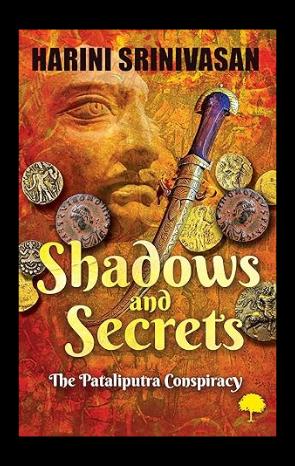
Harini Srinivasan's "Shadows and Secrets
– Tha Pataliputra Conspiracy" transports readers on an engrossing voyage through ancient India's Gupta Empire, combining historical detail with intriguing intrigue Set in Pataliputra during the reign of Maharaja Chandragupta II Vikramaditya, the story develops as a compelling whodunit, with Mahakavi Kalidasa, the famed poet-dramatist, at the helm of the official intelligence network Shaunaka, an astute and idealistic spy recruited by Kalidasa to solve the mystery, sees the story as it develops Shaunaka discovers deceit, religious extremism, and a century-old mystery as he explores the city's underbelly, which leaves more questions than answers The detailed descriptions envelop readers in the sights, sounds, and scents of the bustling metropolis of old Pataliputra The story is enhanced by Srinivasan's painstaking research, which offers an engrossing look at the Gupta Empire's intellectual and cultural vitality With a deft hand, Harini skillfully blends historical data with tense intrigue in his narratives The characters are well drawn, giving the plot depth Kalidasa and the cunning spy Shaunaka in particular. The trip Shaunaka takes through a maze of deceit and religious fanaticism, along with Kalidasa's dual function as spymaster and poet, provides a sophisticated examination of the difficulties of the time. The novel's combination of historical fiction and mystery heightens its attractiveness, appealing to followers of both genres. The core mystery develops with twists and turns that keep readers wondering until the big reveal Furthermore, the examination of religious fanaticism adds complexity to the story by providing thought-provoking insights into the era's social and political dynamics Harini Srinivasan's unusual mystery and historical fiction are both engaging and instructive She brings readers to ancient India's intellectual and cultural riches via vivid storytelling and meticulous research Although some people may not find historical novels appealing, "Shadows and Secrets" successfully blends mystery and history while providing a gripping and adaptable plot All things considered, "Shadows and Secrets" is an engrossing book that provides an enthralling look into ancient Indian civilization It blends historical depth with exciting mystery to provide an incredibly engaging reading experience.
This compelling tale of murder, conspiracy, and cultural fusion under the Gupta Empire showcases Harini Srinivasan's narrative talent.
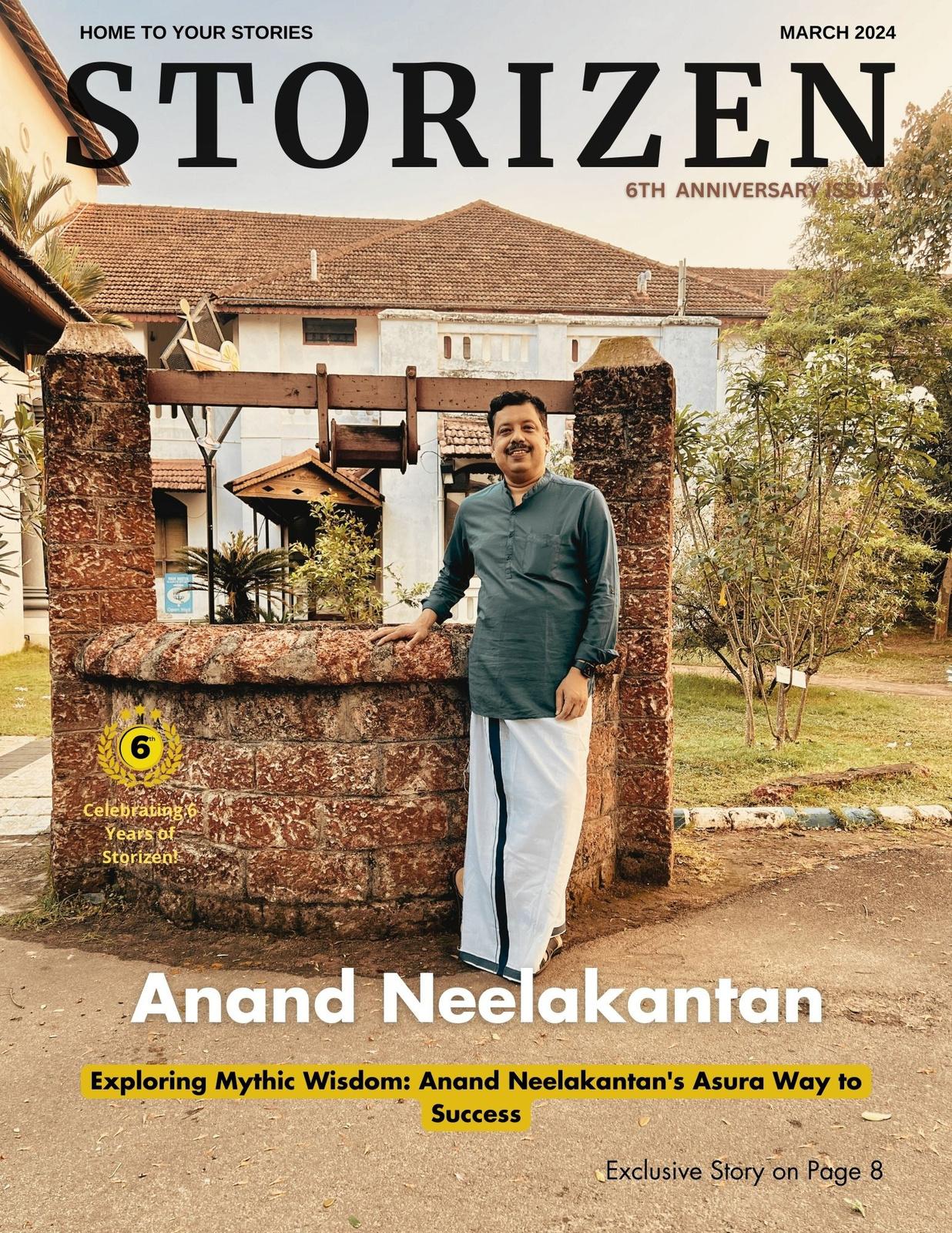
STORIZENREVIEW STORIZEN MAGAZINE | 63 APRIL 2024
our 6th Anniversary Special Issue here.
Read

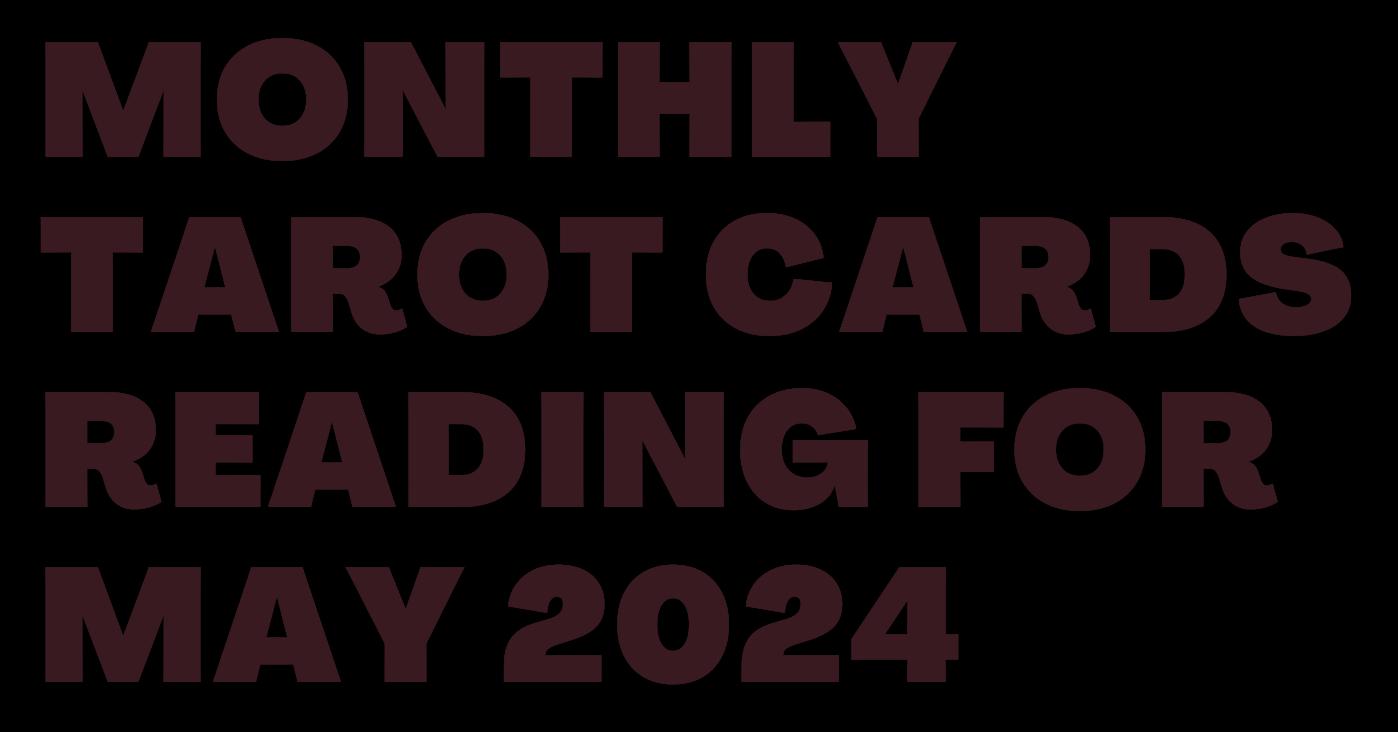

READ SIMILAR STORIES, VISIT
TO
WWW.STORIZEN.COM


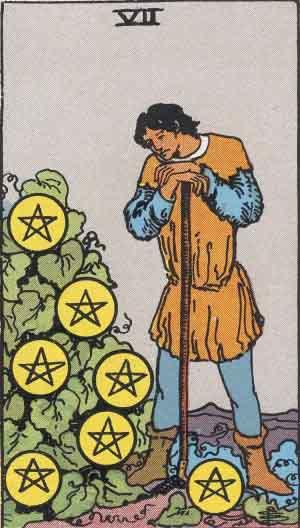

ARIES MOON SIGN: 9 OF PENTACLES
This month Aries, you are selfconfident and independent with abundance, prosperity and gained wealth through hard work It’s the time to reward yourself with gifts and enjoy! It also indicates you have got a leadership role and experiencing success
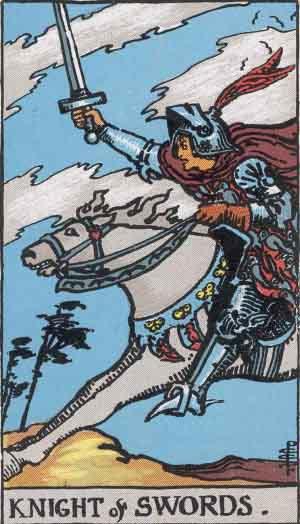
TAURUS MOON SIGN: PAGE OF PENTACLES
This month Taurus, you might receive unexpected money from someone who had taken loan from you It also indicates you might be manifesting your dream goal and laying a solid foundation to implement your goal It also indicates the start of a new project which lead to financial growth
GEMINI MOON SIGN: 7 OF PENTACLES
This month Gemini, you might be putting efforts for long term goals and have strong desire to invest in long term savings. It also indicates to have patience and not be frustrated for the slow result. Continue to do your hard work and sooner you will receive rewards
CANCER MOON SIGN: 7 OF SWORDS
This month Cancer, be cautious and be alert as someone close to you might betray you or cheat on you It also indicates you might use shortcuts to fulfil your desire. But sometimes, you might get caught and face the shame so don’t use the shortcut method. Sometimes, It also indicates, you need to strategize your priorities to fulfil your goals.
LEO MOON SIGN: KNIGHT OF SWORDS
This month Leo, you must wait for a big change in your life which you might be waiting since long It also indicates, focus on your work, and move towards success It is the time to pull your socks and jump on your goals
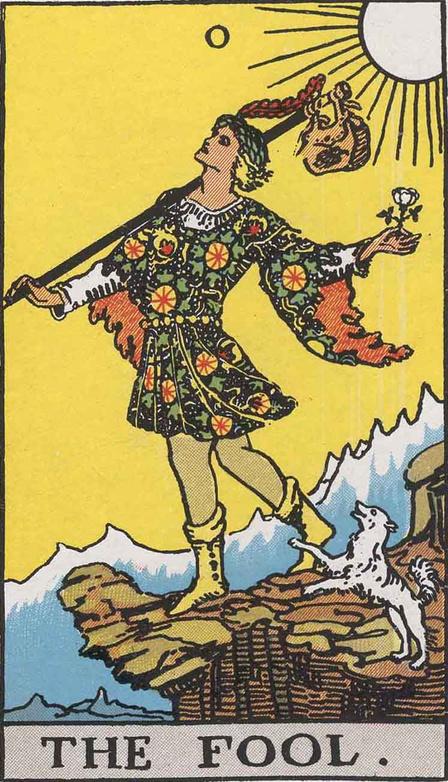
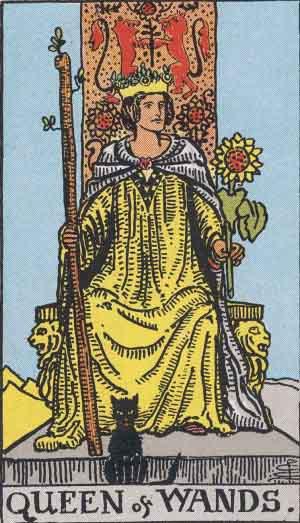
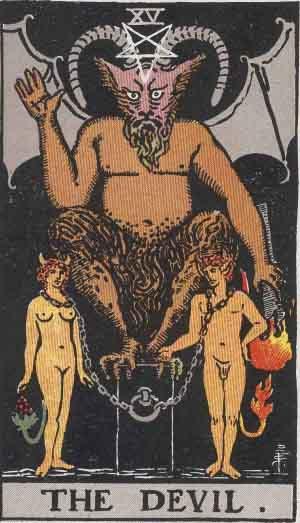
VIRGO MOON SIGN: THE FOOL
This month Virgo, you will have new Beginnings and potential opportunities It is the month to take risks and move towards your goal based on your leap of faith in the Universe that is on your side Even if you don’t know the path, just go for it
LIBRA MOON SIGN: QUEEN OF WANDS
This month, you need to have self confidence and bold enough to chase your dream purpose. It’s the time to be courageous and determined to face any challenges towards your goals. Don’t be afraid of your power and believe in yourself to chase your dreams You are a social butterfly to build your network for your success
SCORPIO MOON SIGN: THE DEVIL
This month Scorpio, you might be trapped by negative forces that are holding you back to be the best version of yourself. It can be your addiction which is stopping you from being happy You might feel that you don’t have control over your shadow, and they give you short-term pleasure Just be aware of your conscious mind and take action to control your addiction and be the best version of yourself
STORIZEN MAGAZINE | 65 APRIL 2024
e
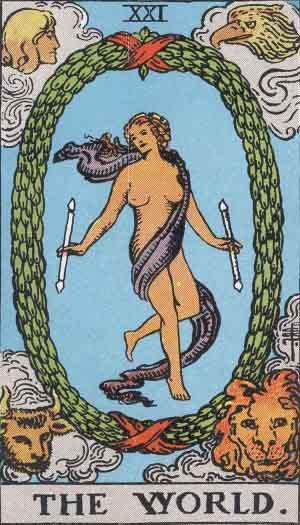
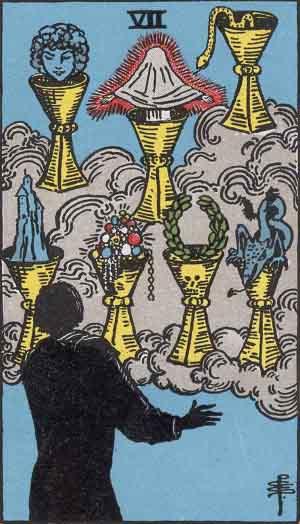
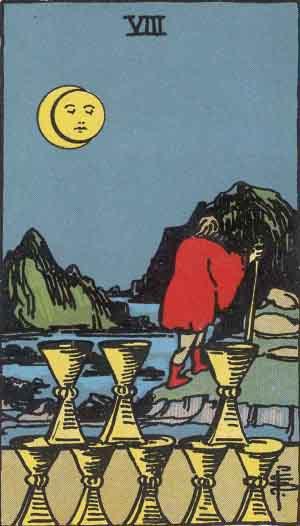
SAGITTARIUS MOON SIGN: THE WORLD
This month Sagittarians, you have completed one project in your workplace and getting appreciation and praise for it It also indicates Marriage, if you are single or planning for a baby if you are married It also indicates, World tour for official work

CAPRICORN MOON SIGN: 7 OF CUPS
This month Capricorns, you might be prone to illusions or unrealistic ideals as you have multiple opportunities to choose from and all seems to be good Just research and choose the best option It also indicates wishful thinking like getting a dream job or house But to get this we need to act Only dreaming won’t work
AQUARIUS MOON SIGN: 8 OF CUPS
This month Aquarians, you are walking away from an unfulfilling situation which is causing you pain and disappointment. Despite putting in efforts, it’s not working in your favor. Sometimes, we escape from the situation which is not working in our favor as it’s making us emotionally drained.

PISCES MOON SIGN: KING OF SWORDS
This month Pisces, you are mature and dedicated towards your work You prefer mind over emotions and think logically on any important decision rather than emotionally It also indicates, Legal matter You might need a lawyer for fighting an important case
I am Himani Goyal, By profession, I am an HR Manager working in Banglore Reading is my hobby which led me to write reviews for my readers I have read and reviewed numerous books so far I am also a practicing Tarot consultant and would be sharing daily, weekly, monthly horoscopes for you all here
66 | STORIZEN MAGAZINE APRIL 2024
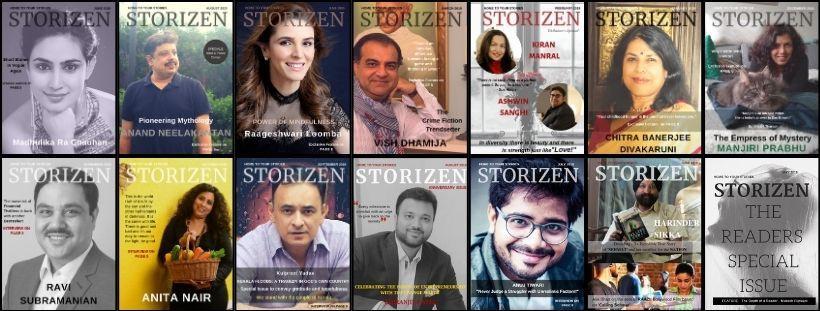
Rekindle your love for books and literature. We bring you the latest releases, interviews and much more from the writing world in our every issue.
Get Storizen Magazine delivered to your inbox the moment the issue is released, subscribe now! Subscribe







FOLLOW US ONExclusive Digital Issue. For more columns and features, scan below
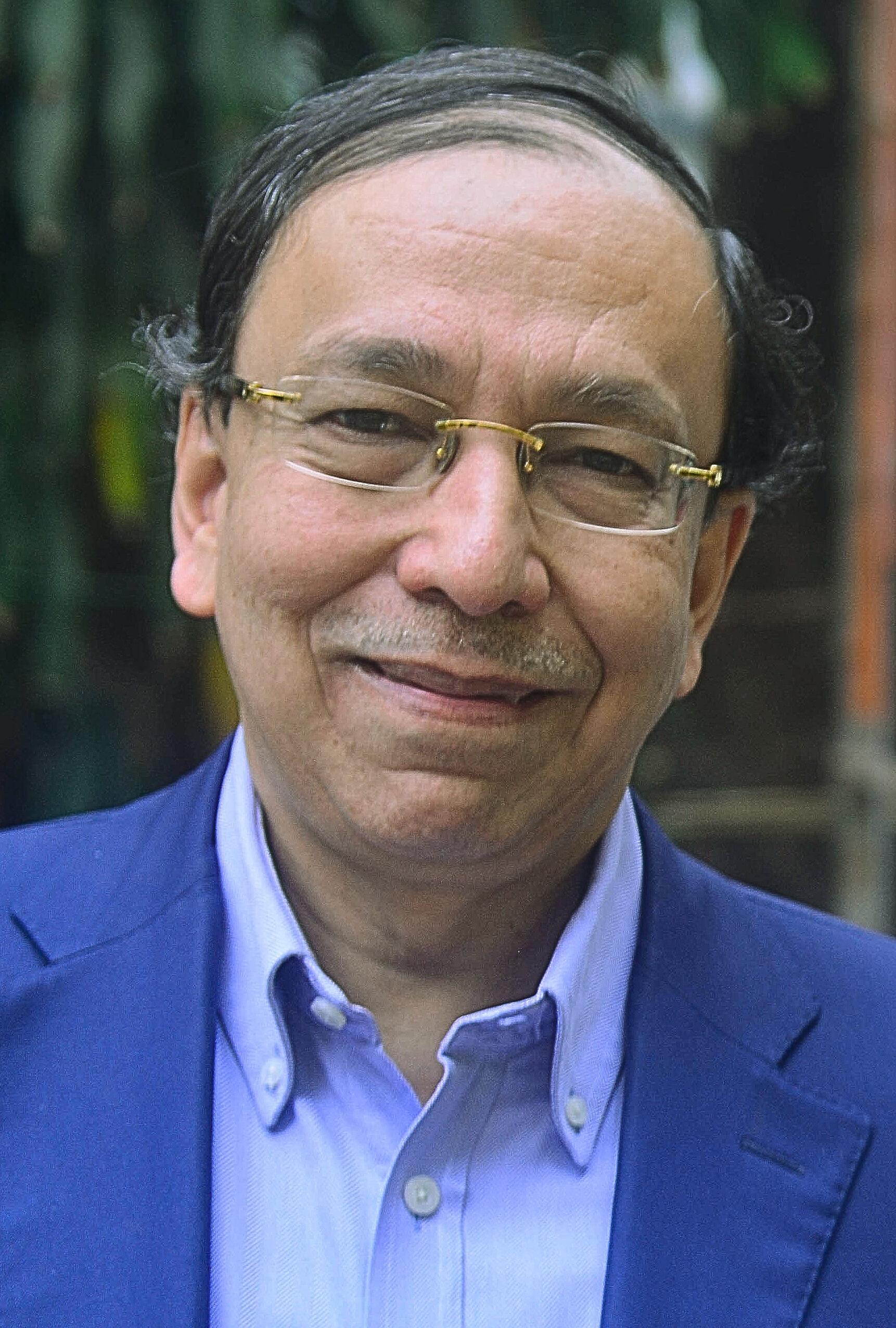









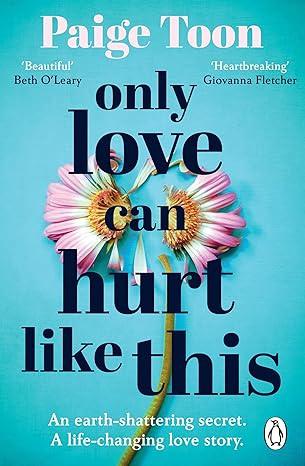
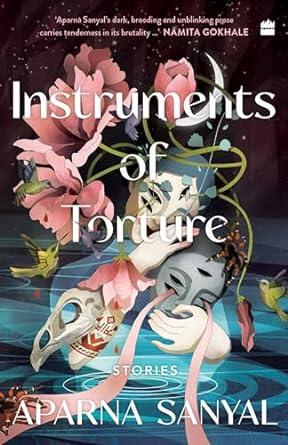
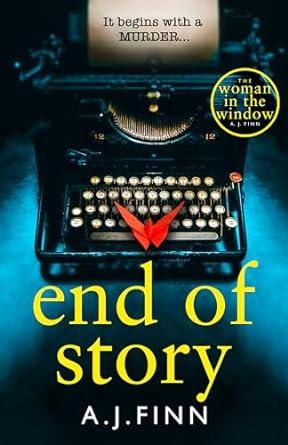
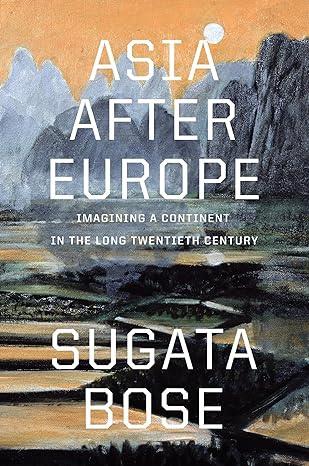

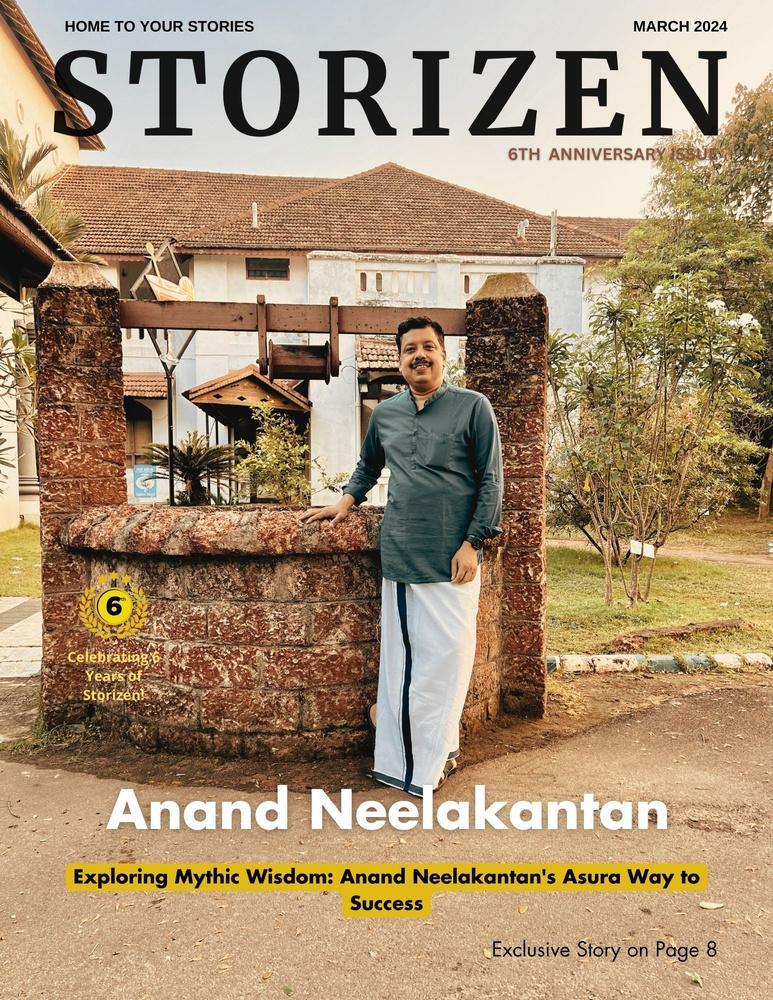


















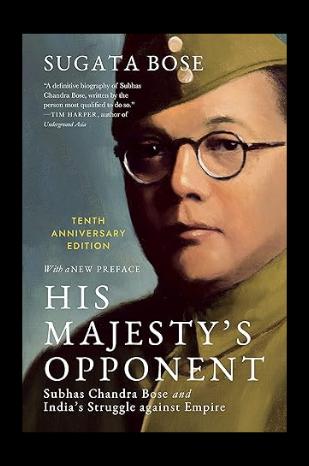

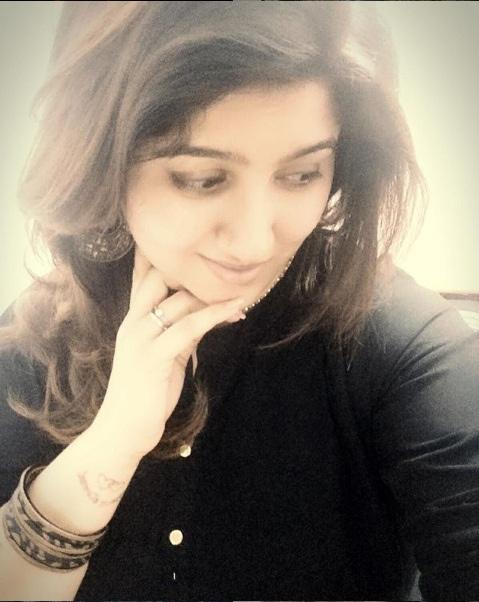






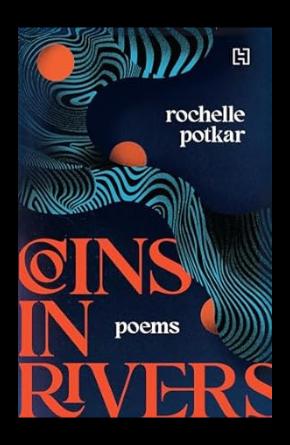
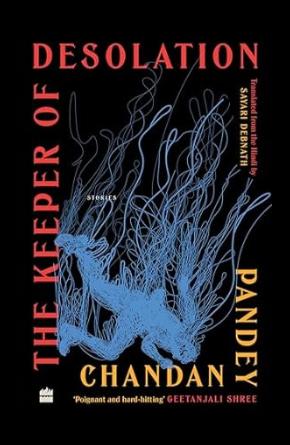
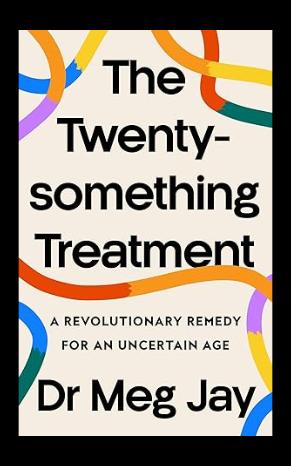
 bySreelekha Chatterjee
bySreelekha Chatterjee







 by Neelakshi Banerjee
by Neelakshi Banerjee





 Pic: Ashis Ghatak
(Source: LinkedIn)
Pic: Ashis Ghatak
(Source: LinkedIn)























































































